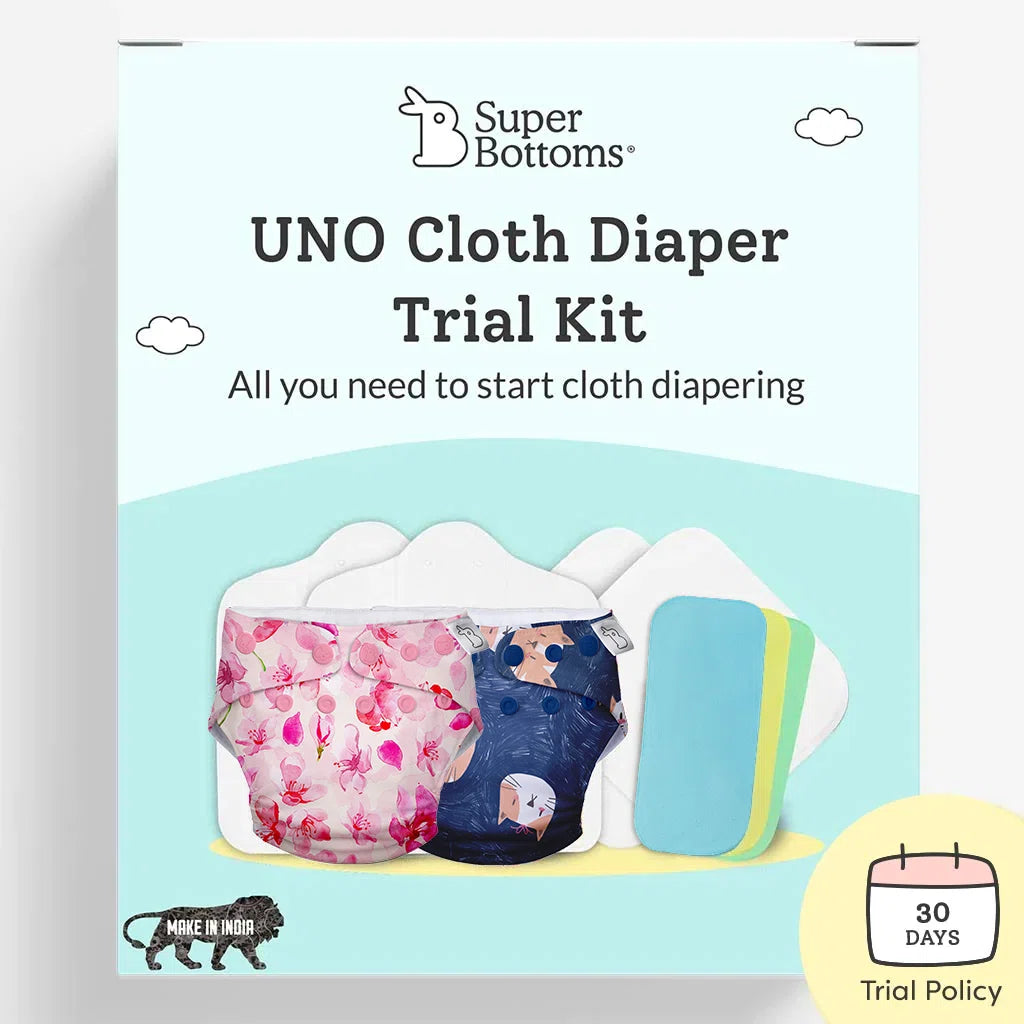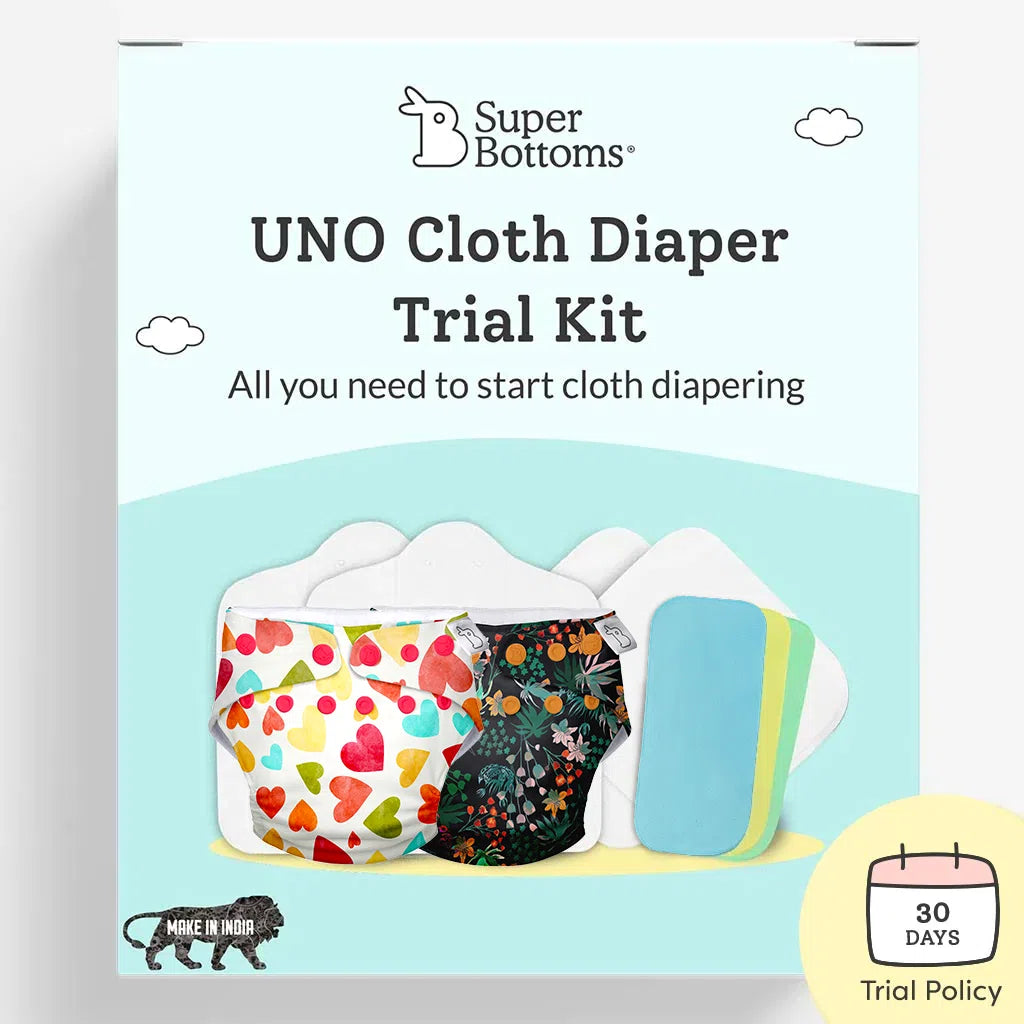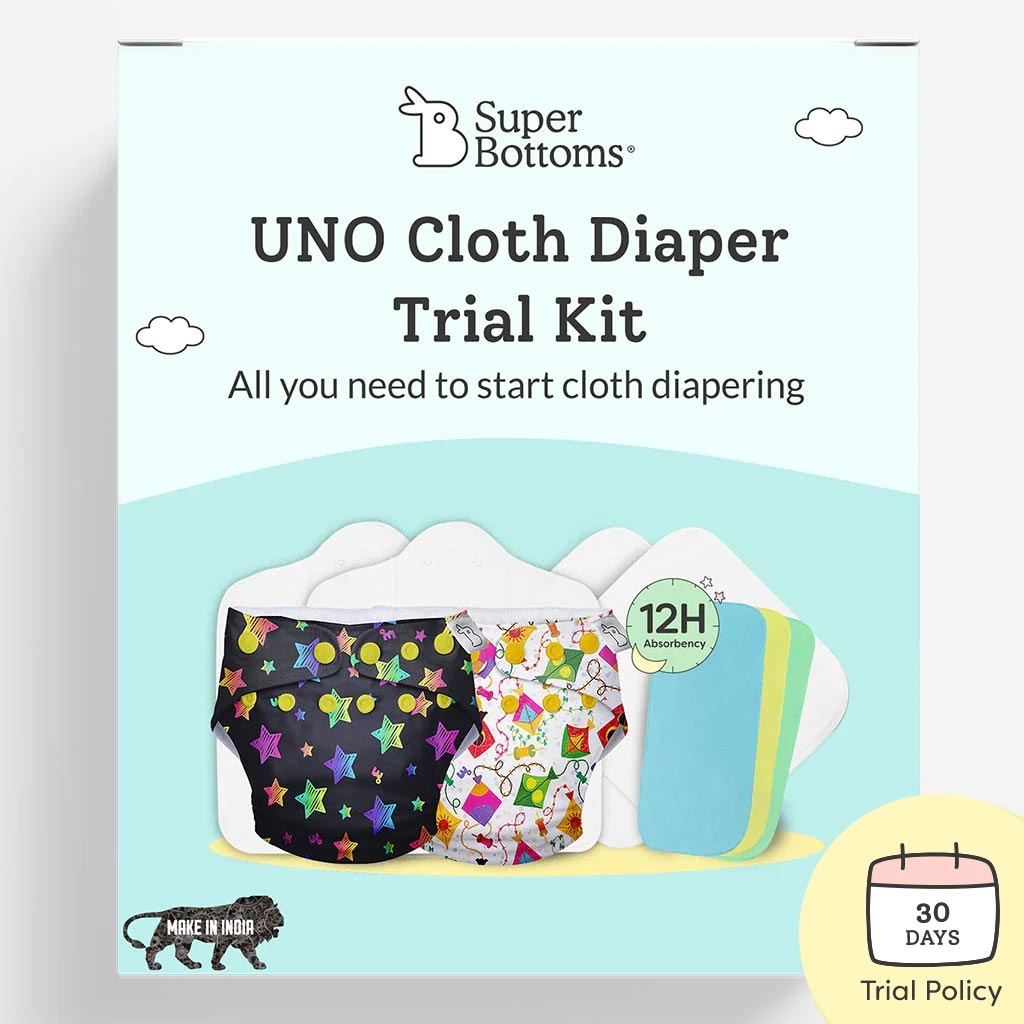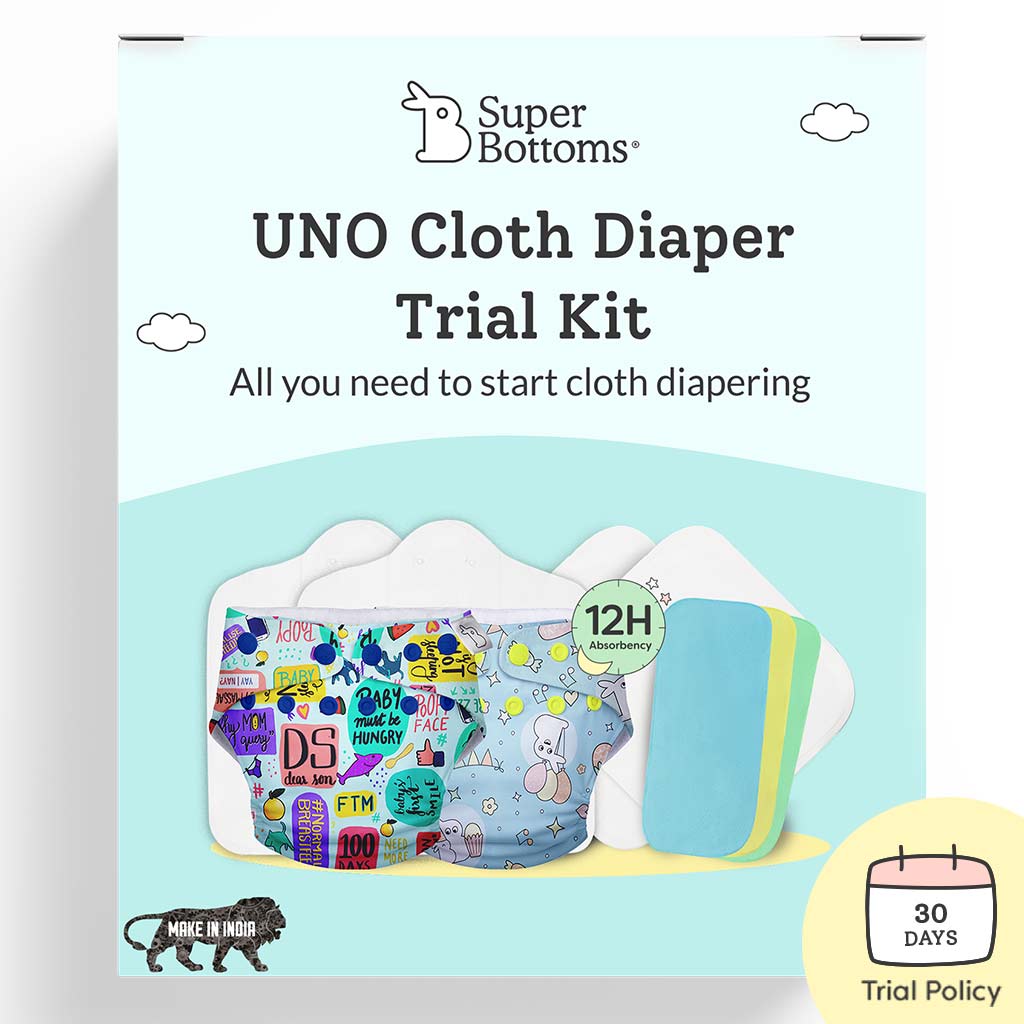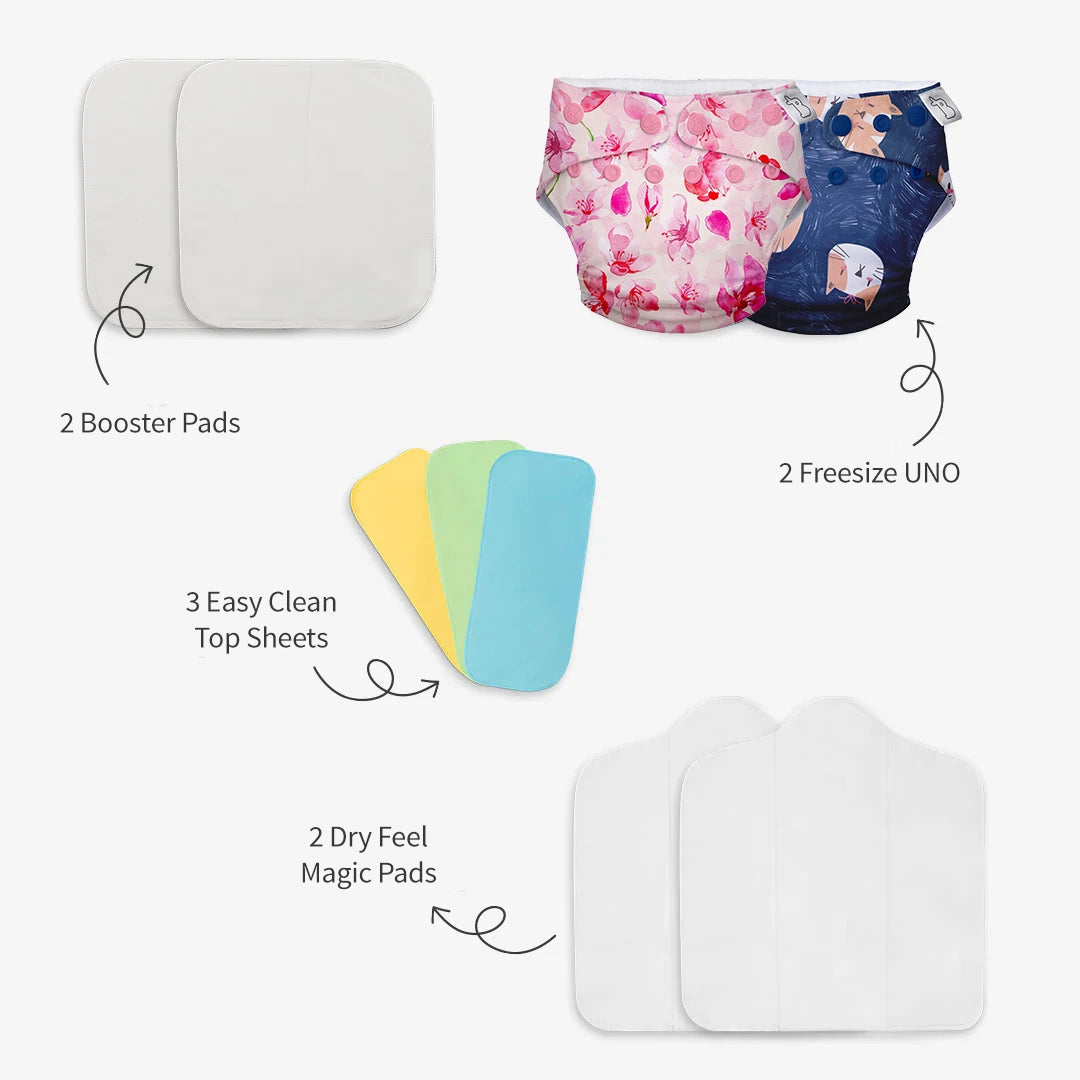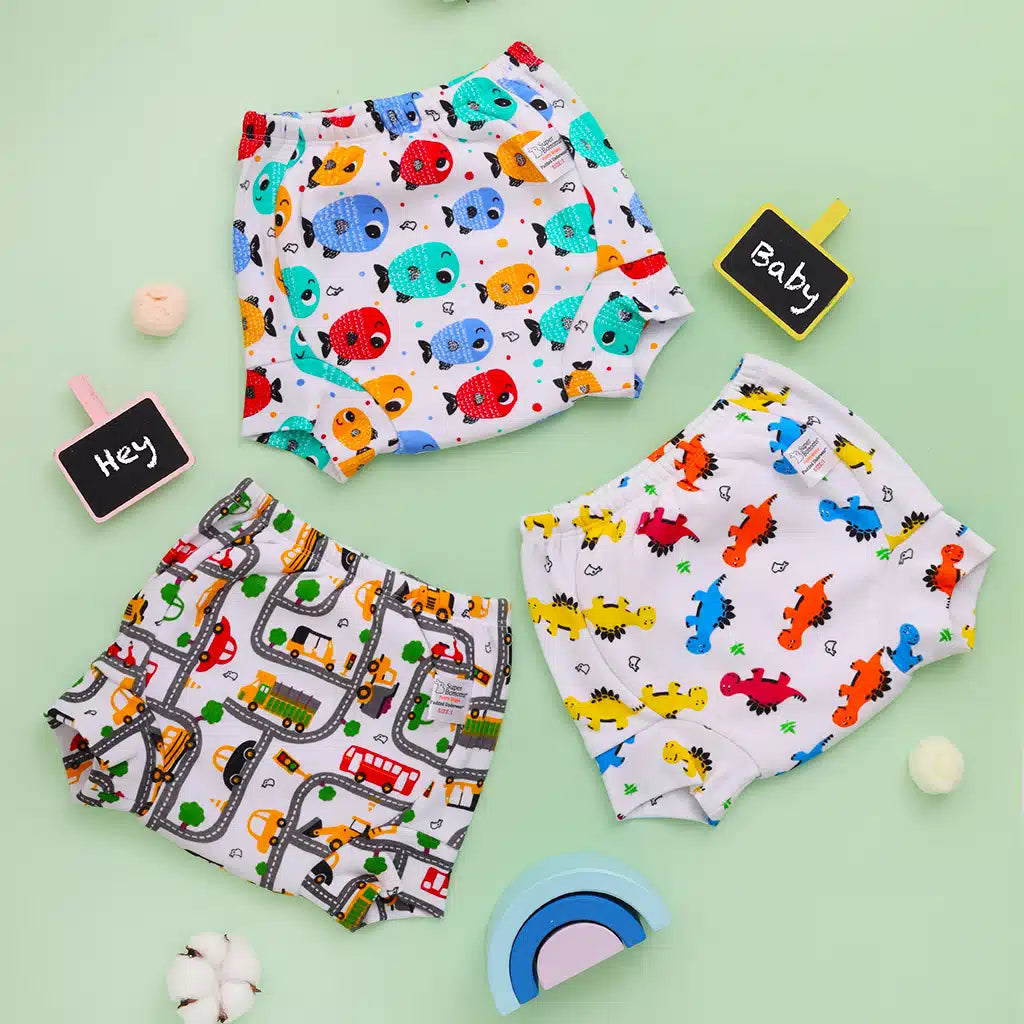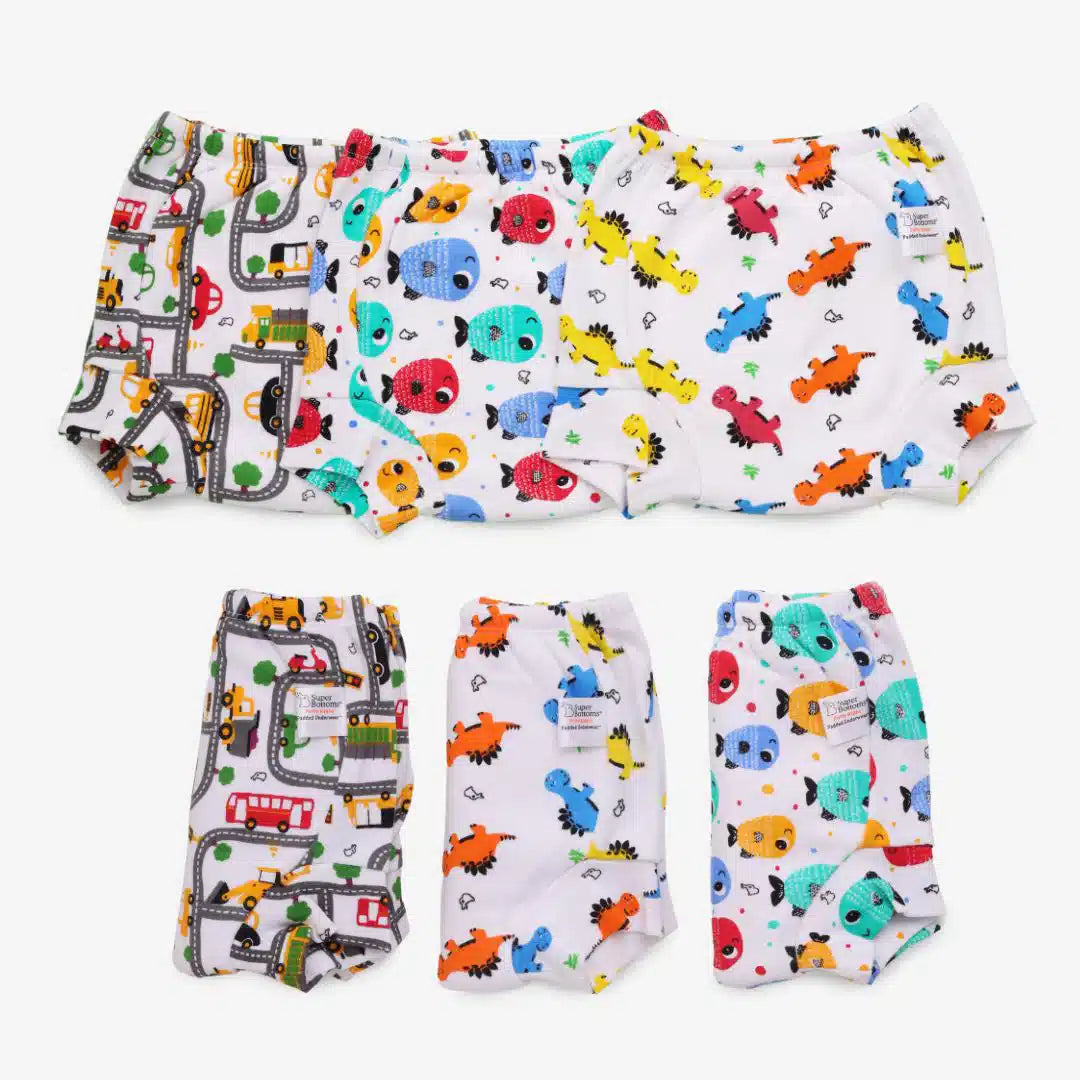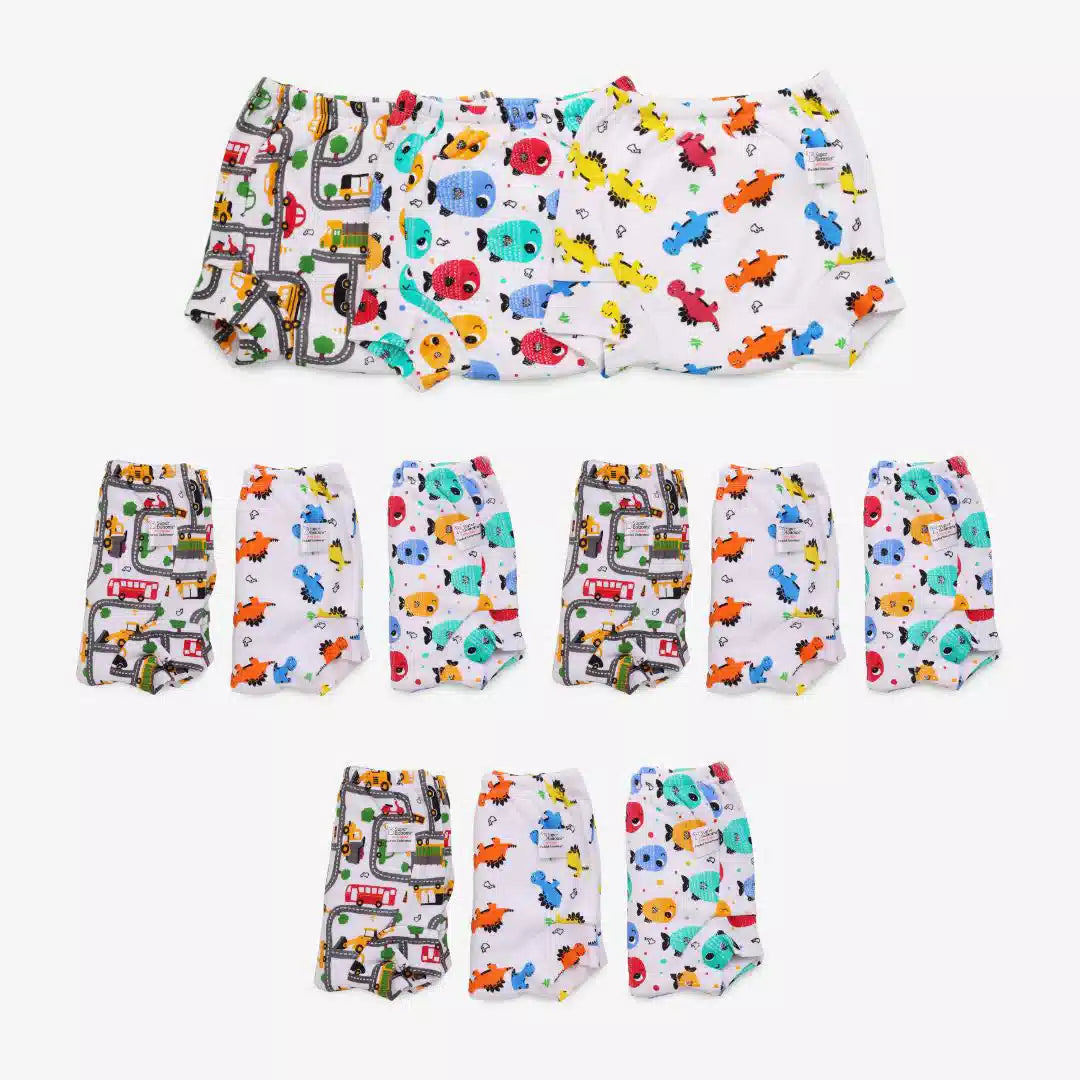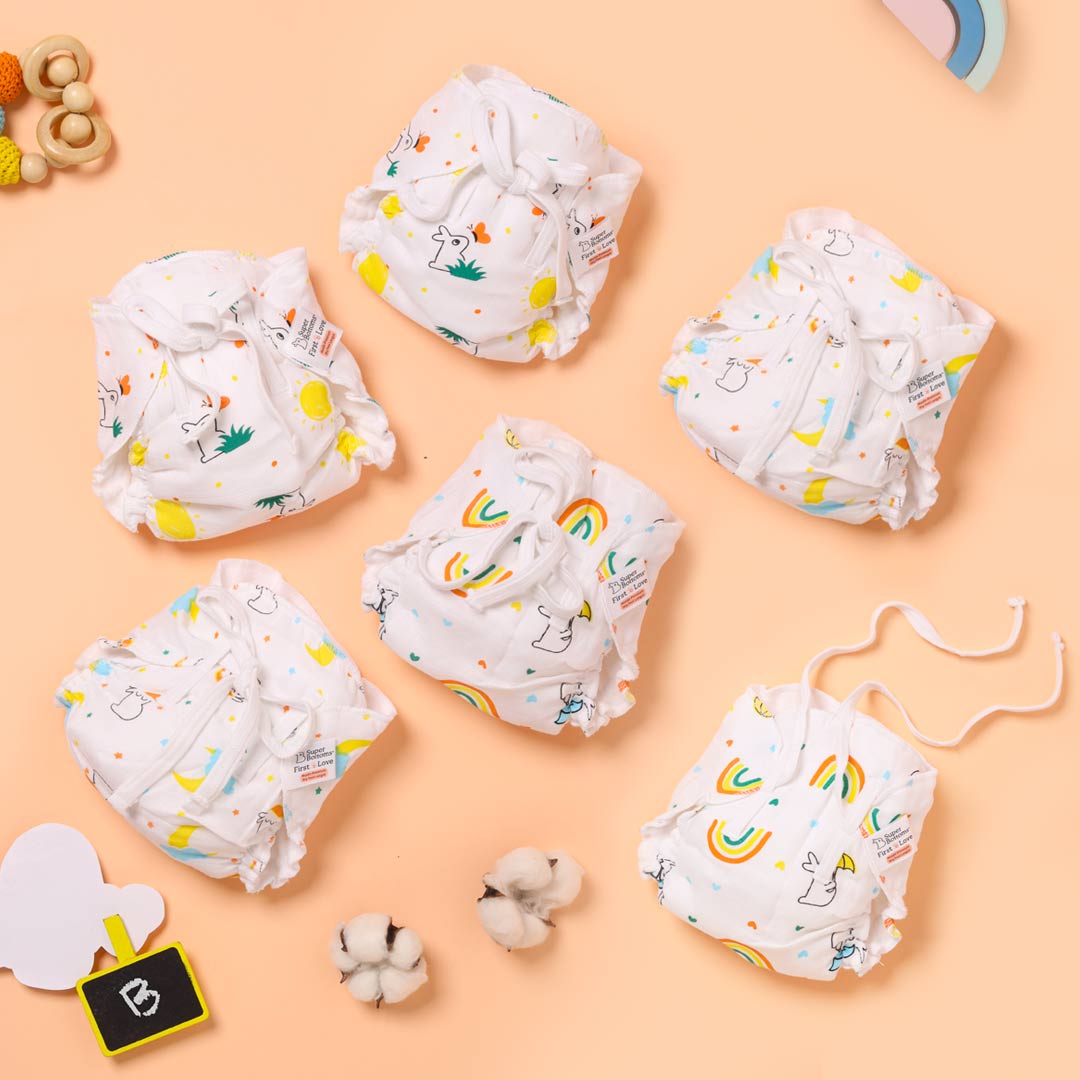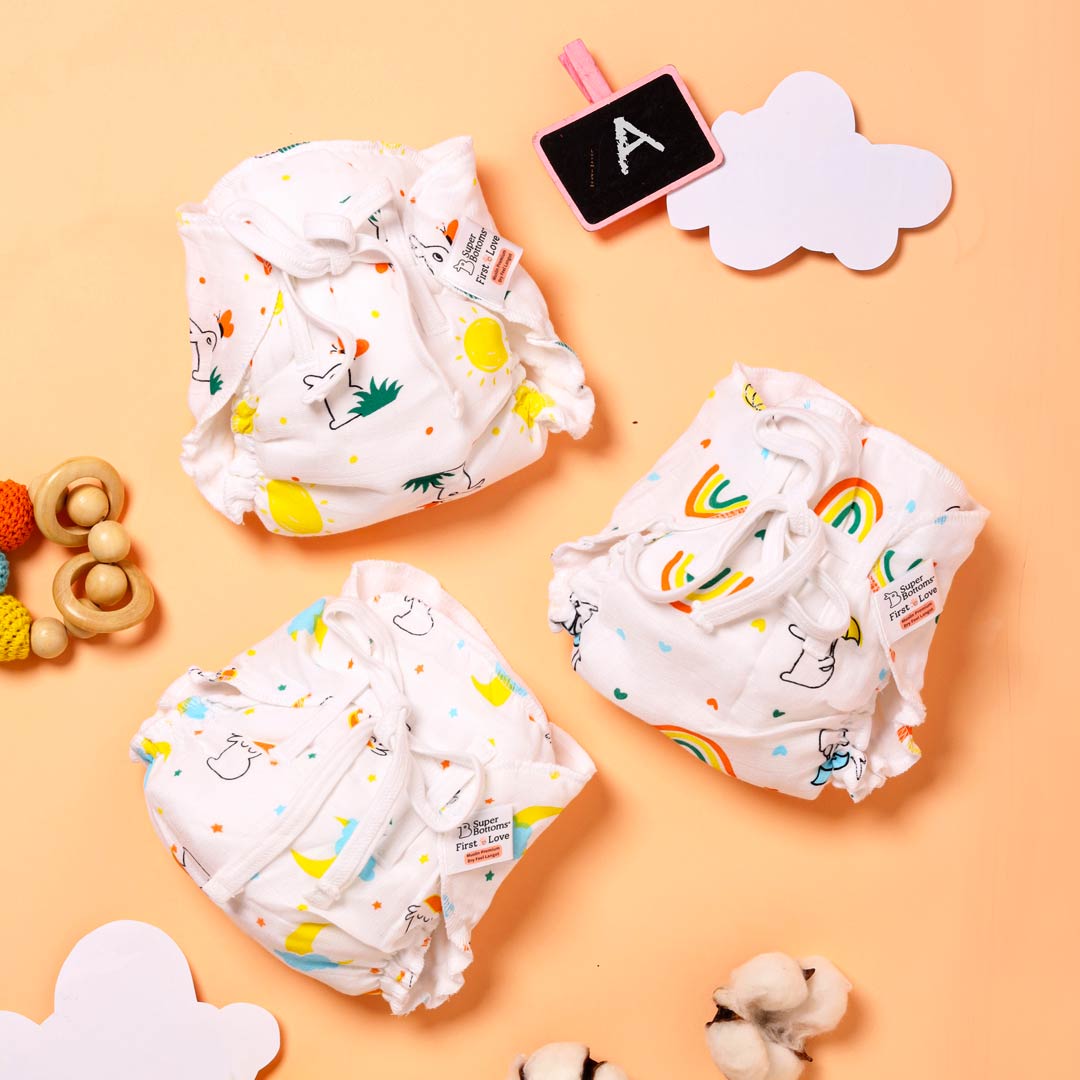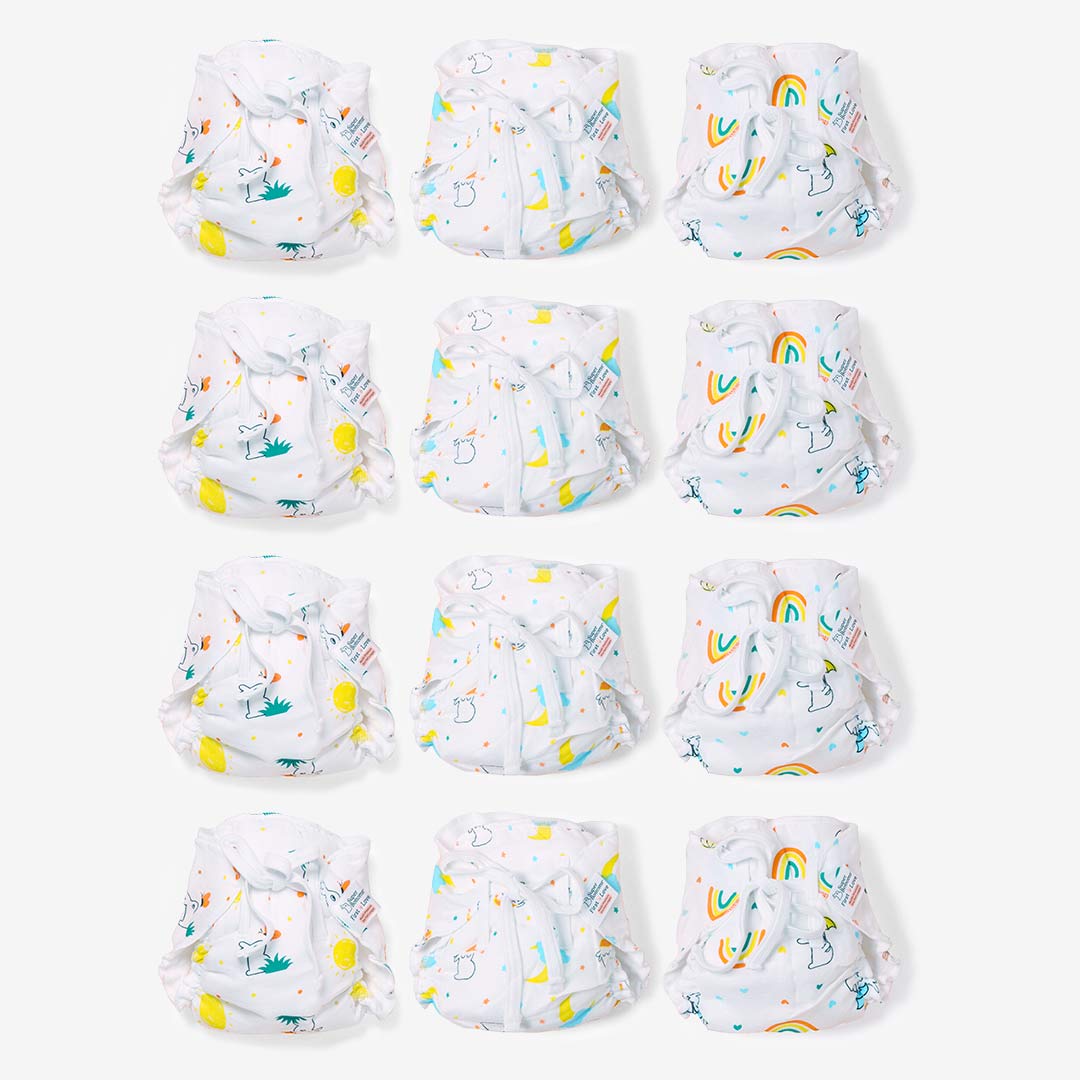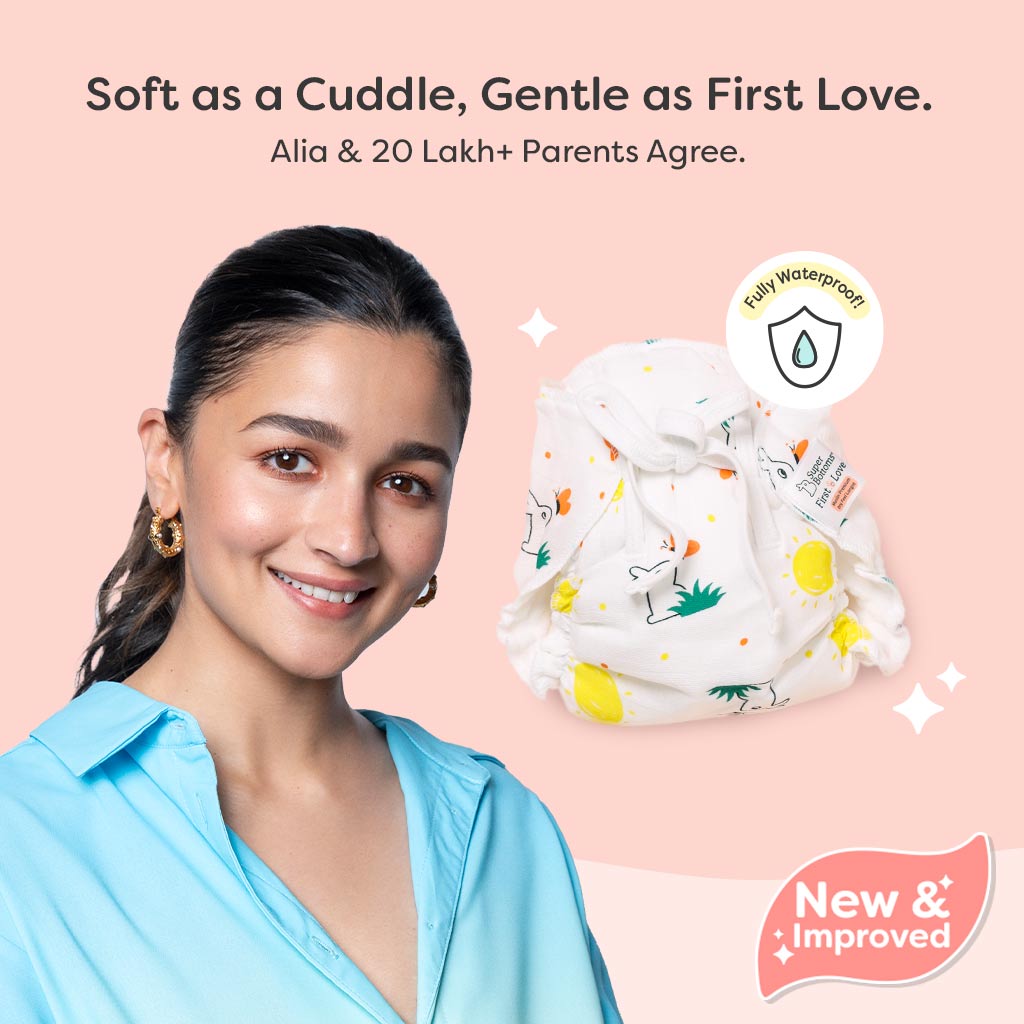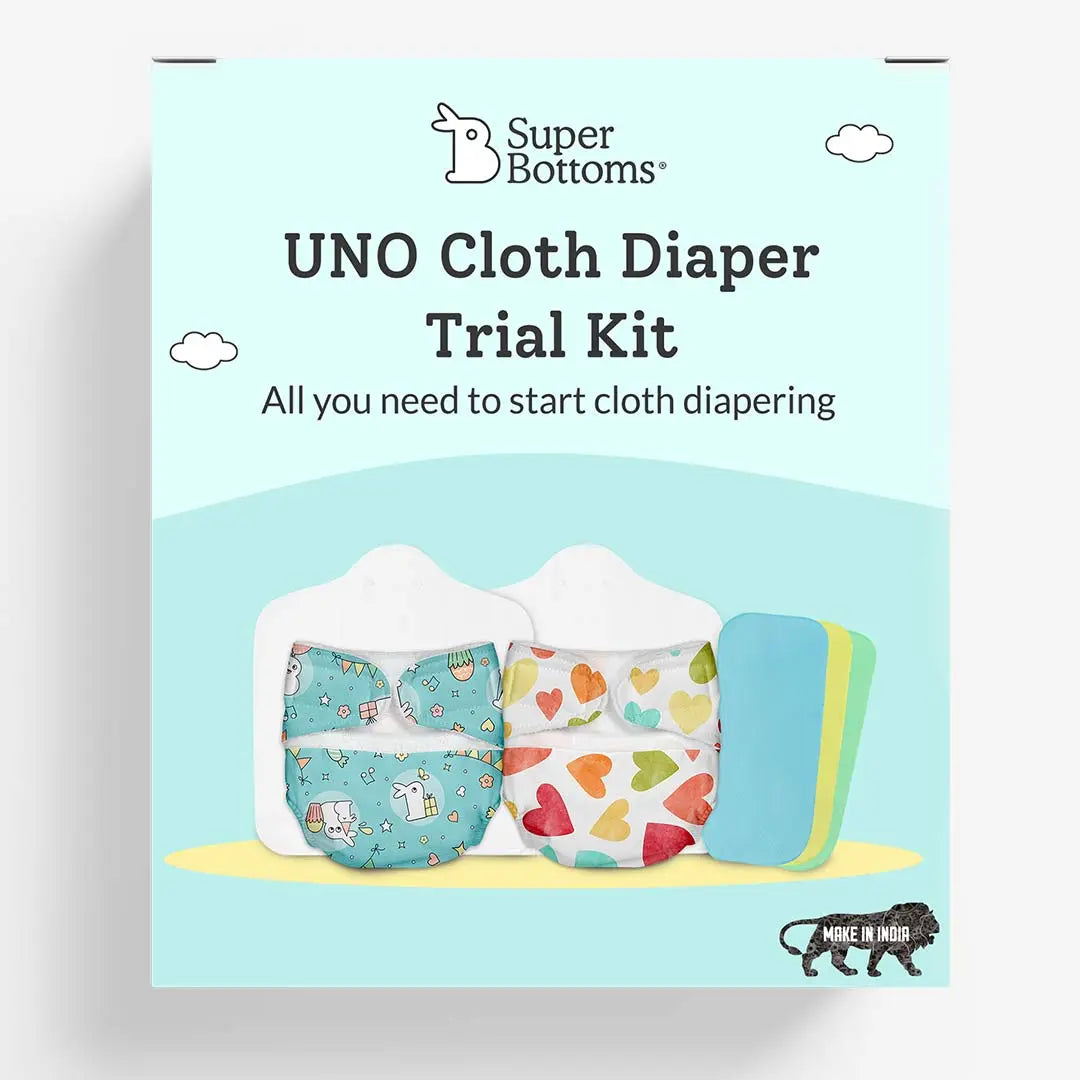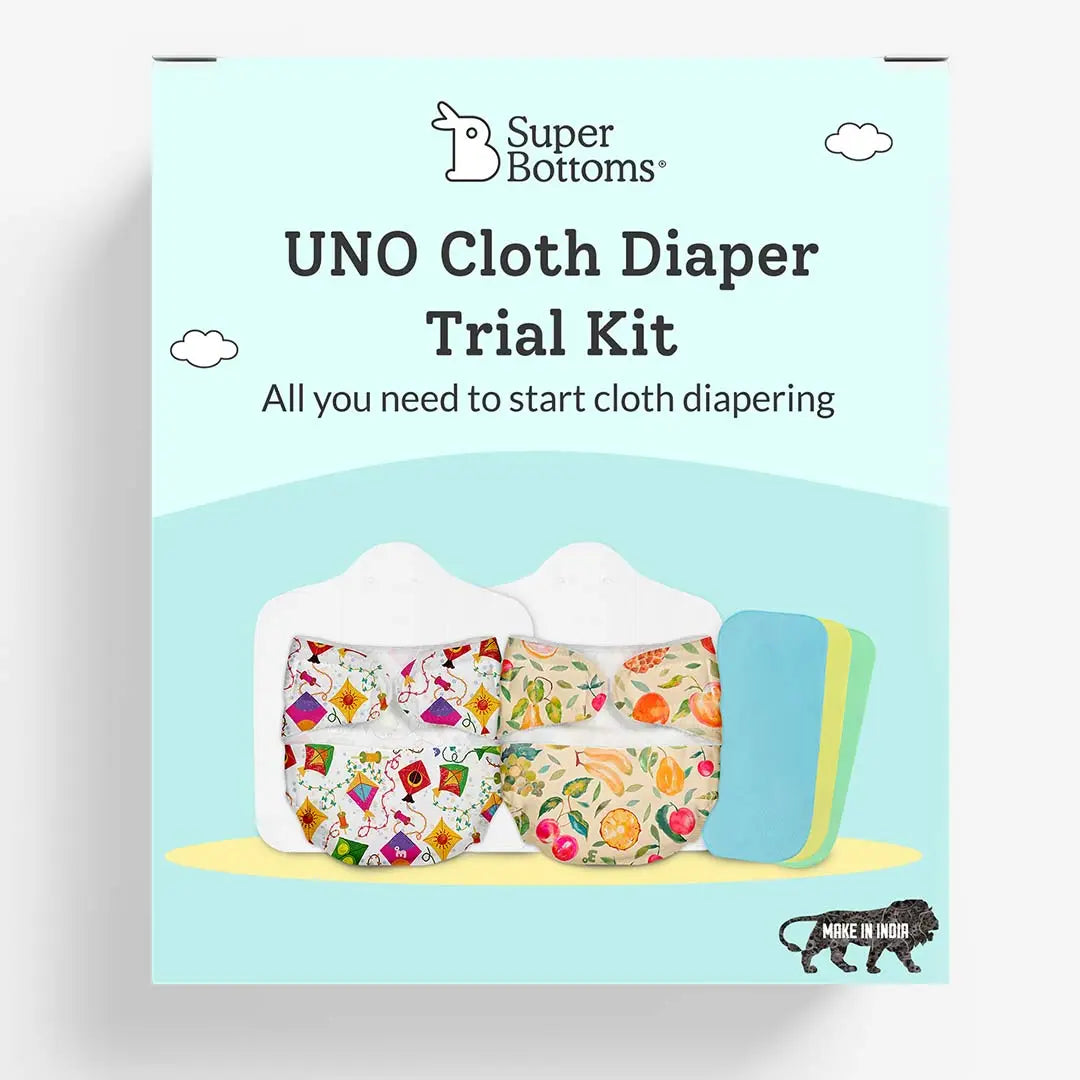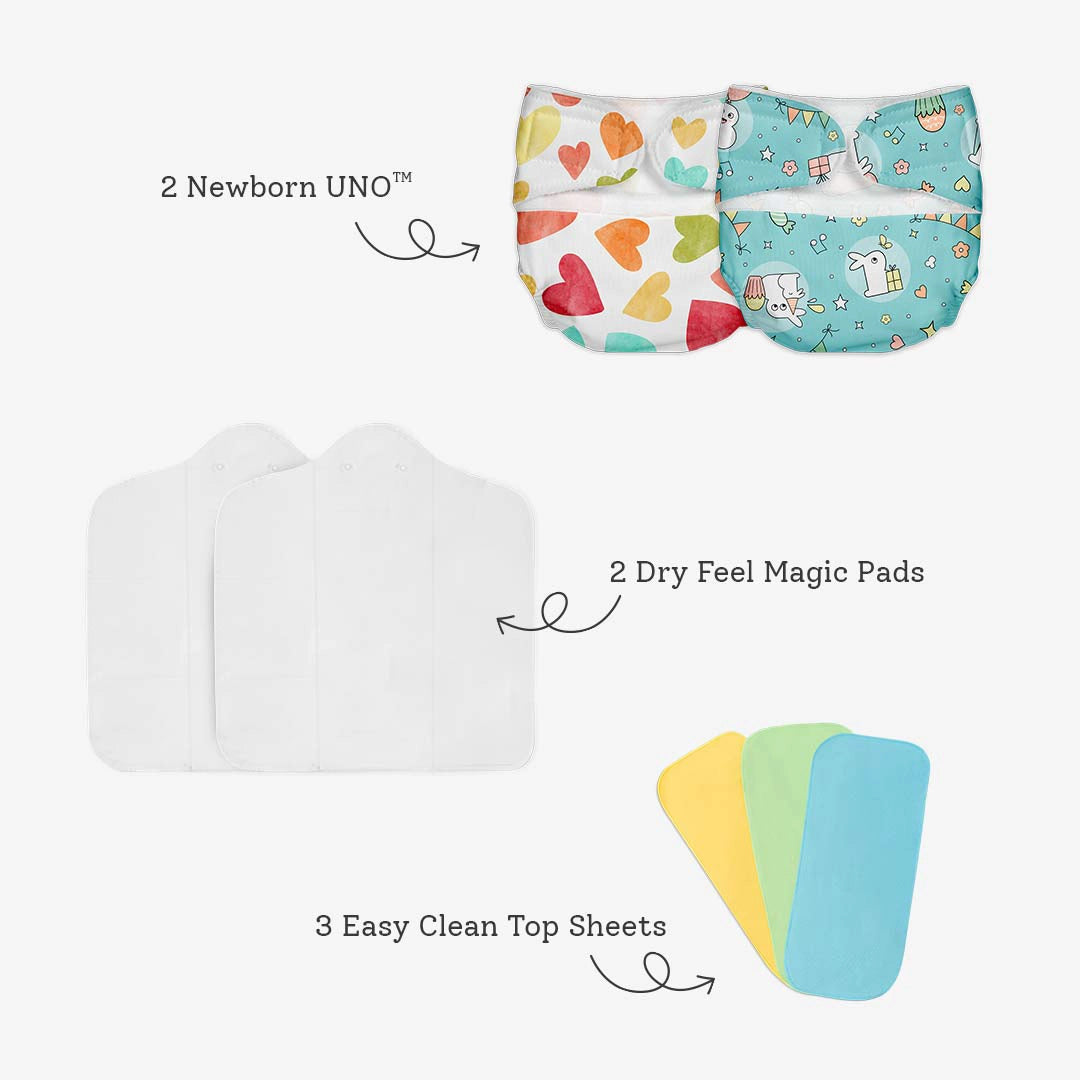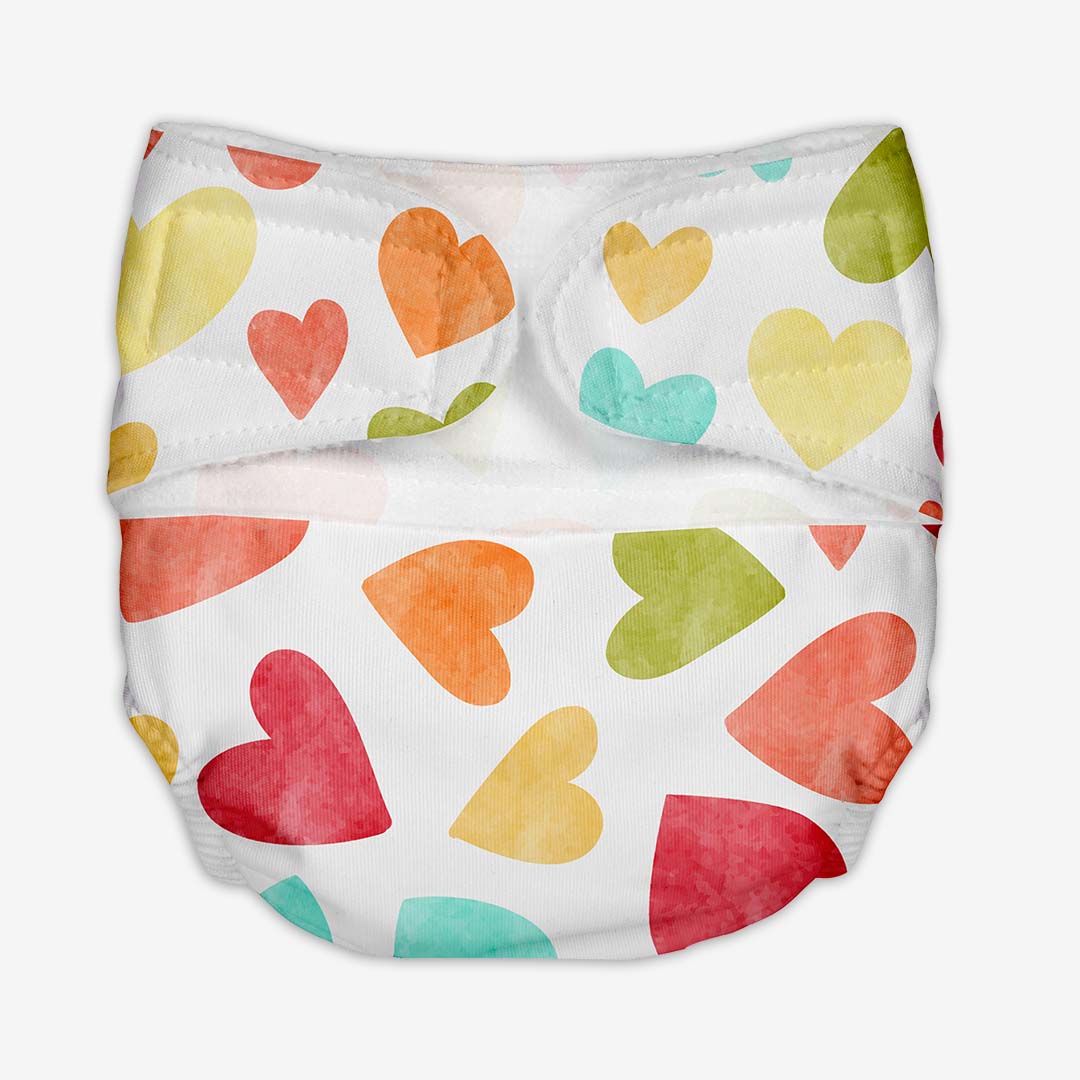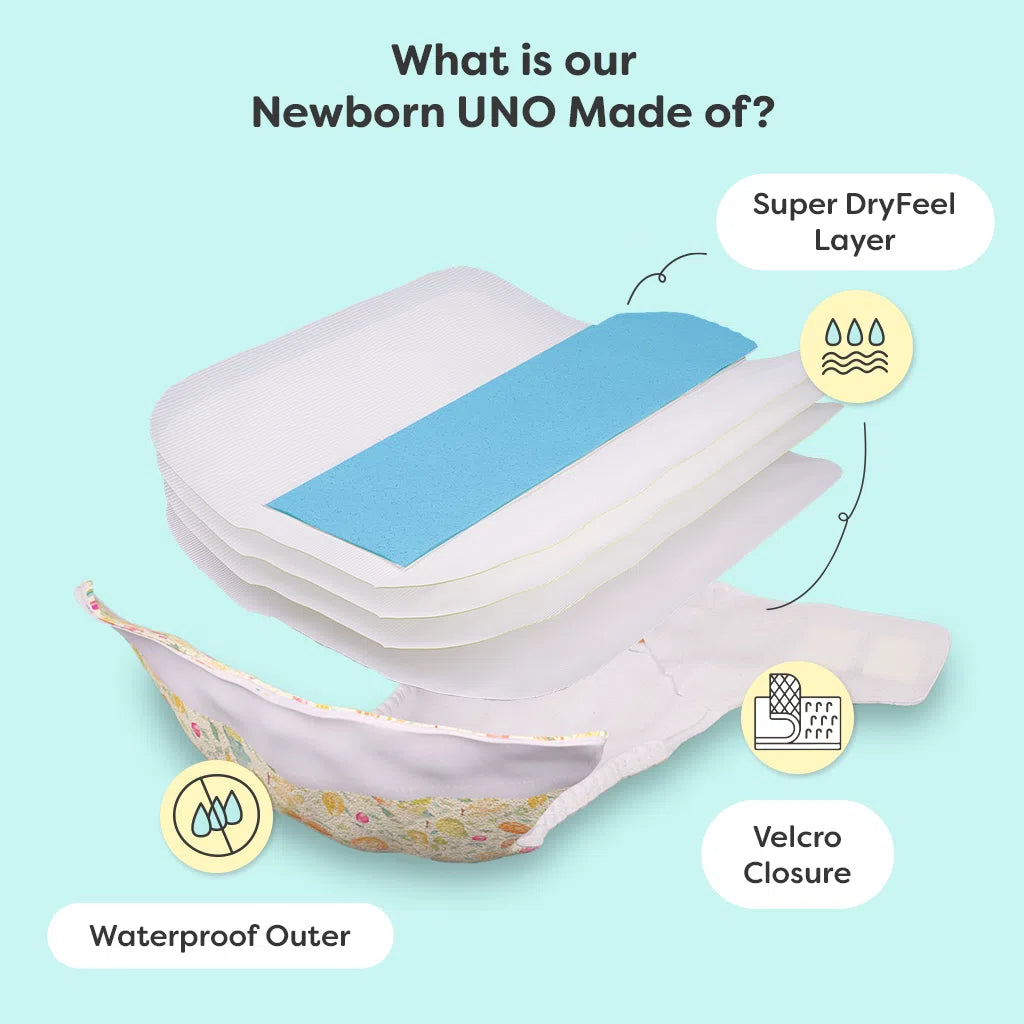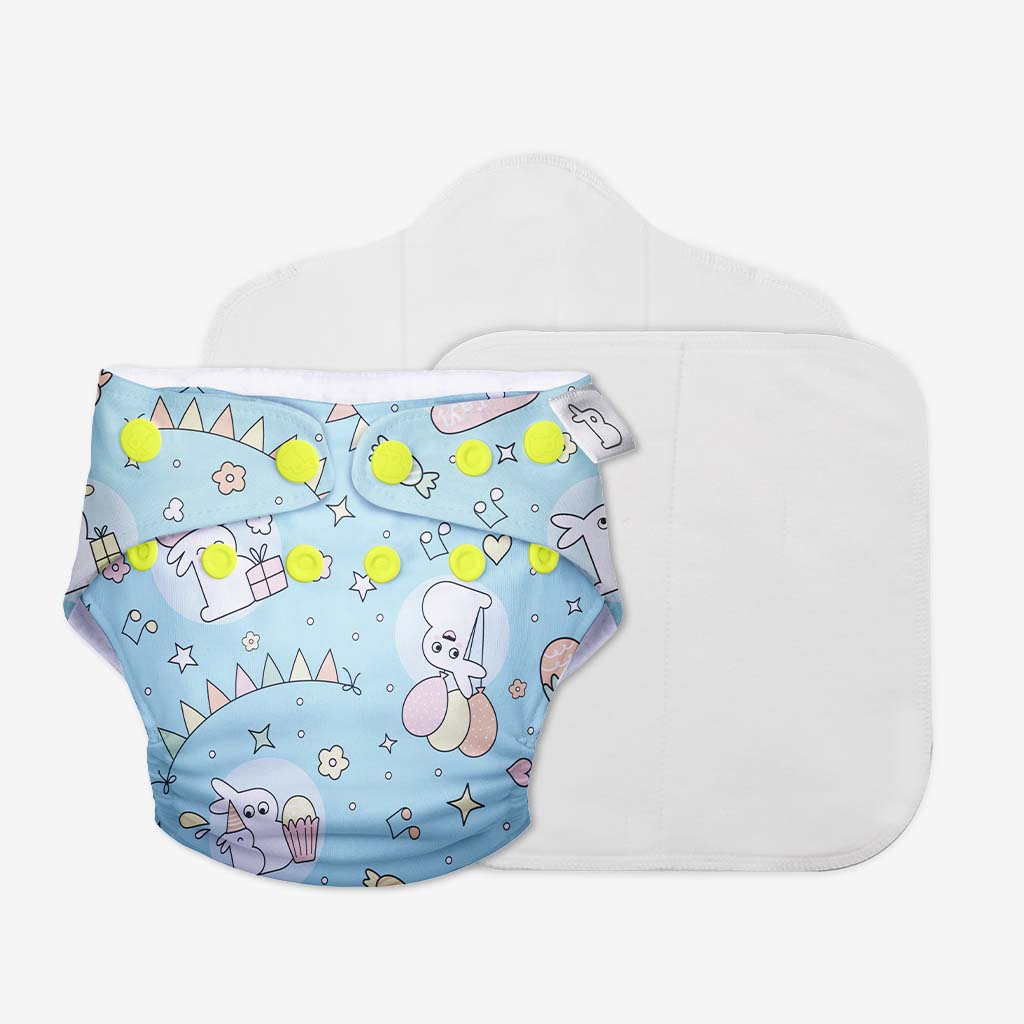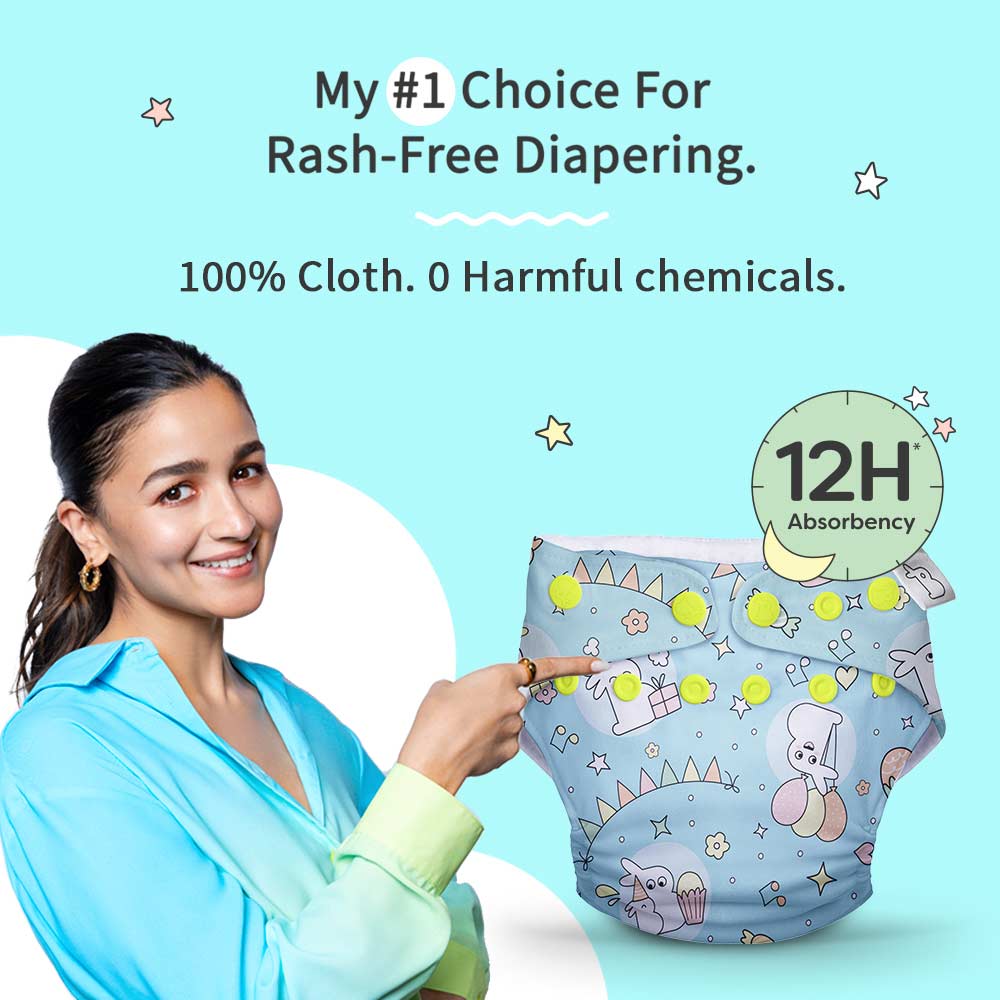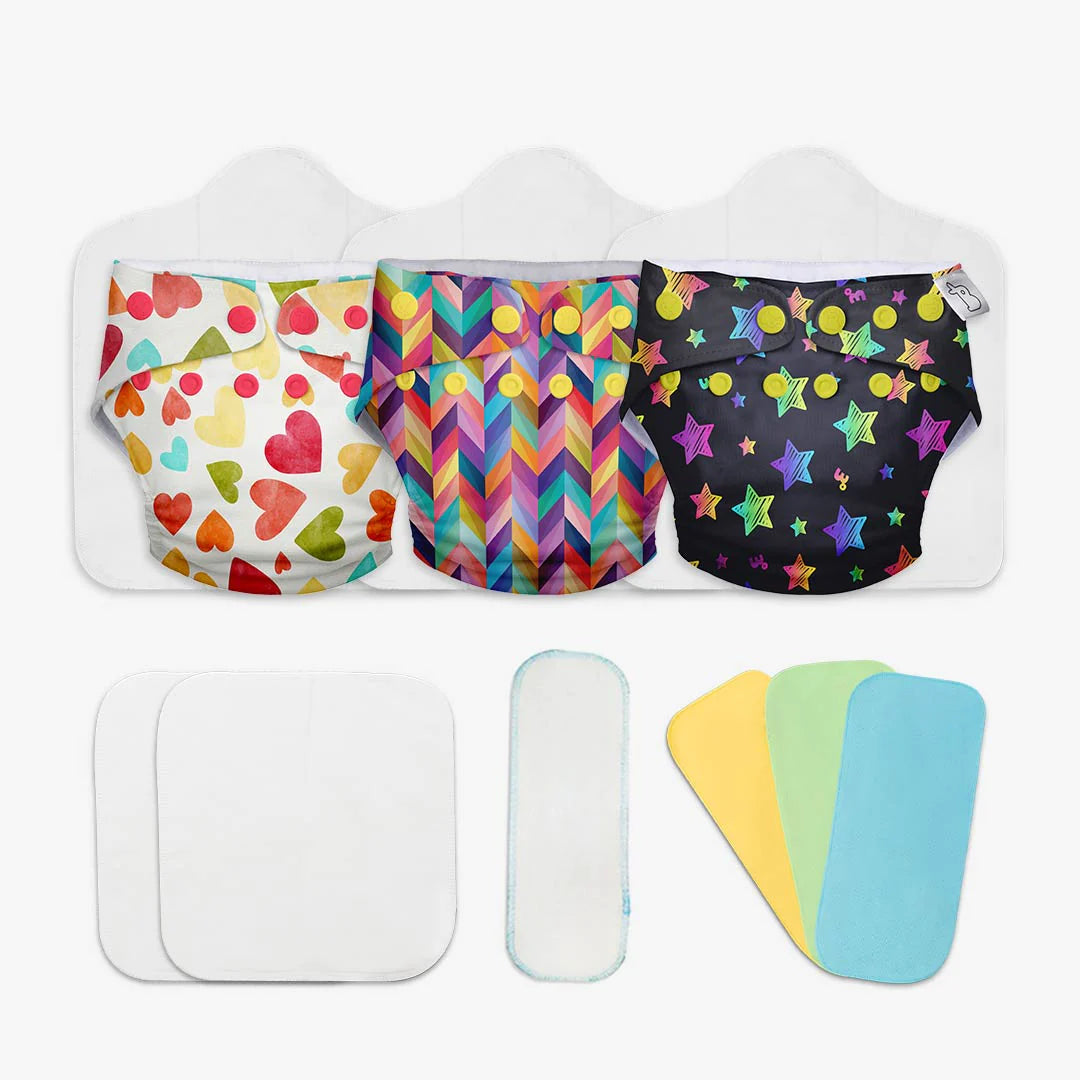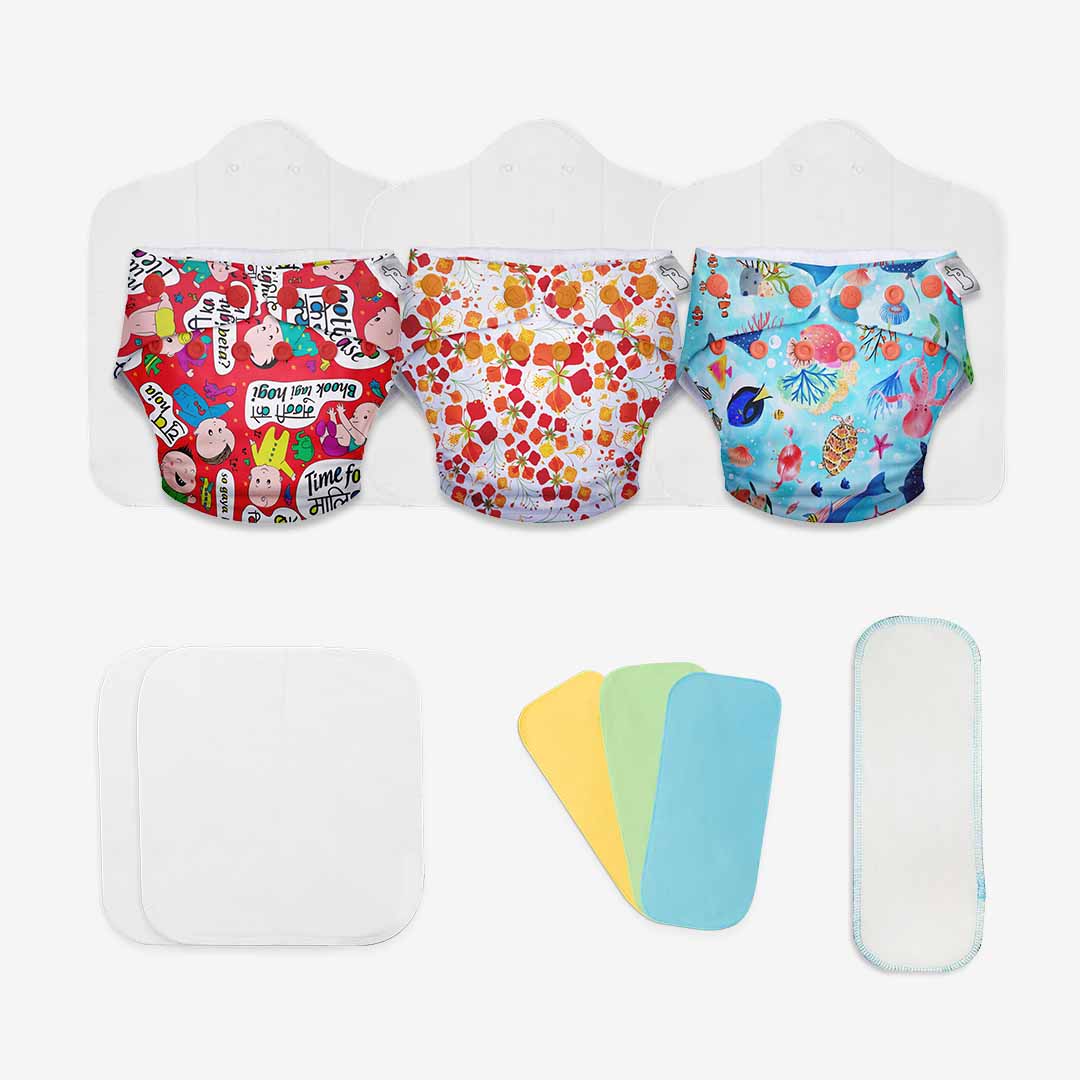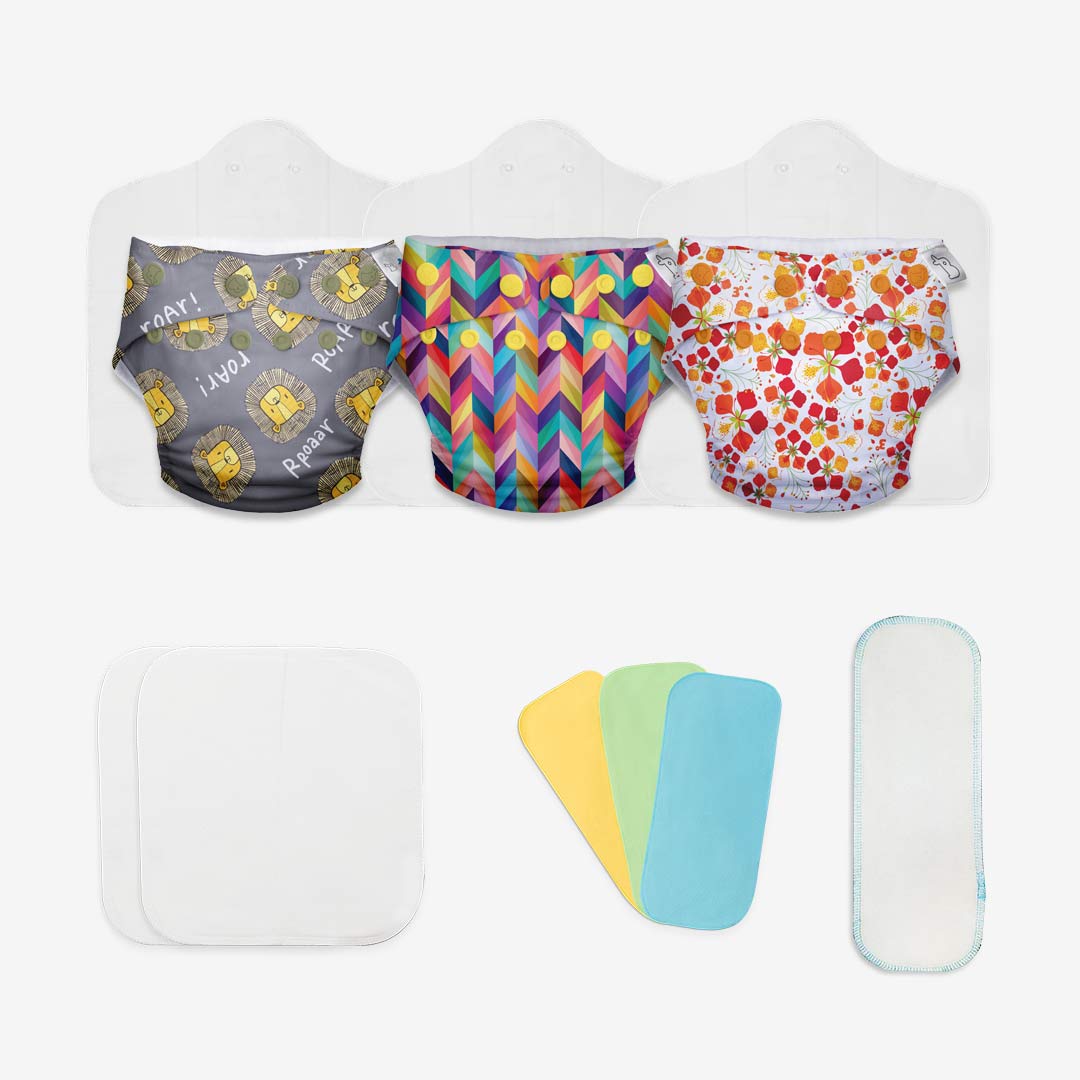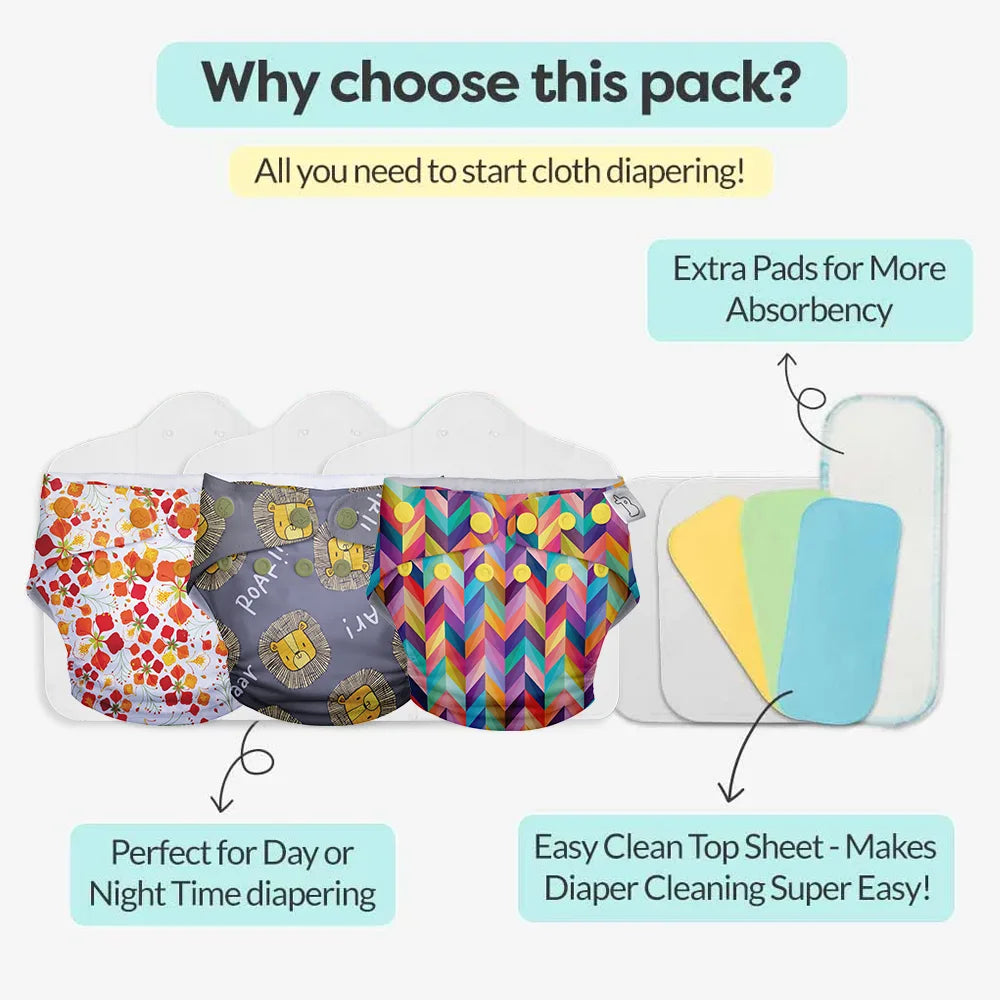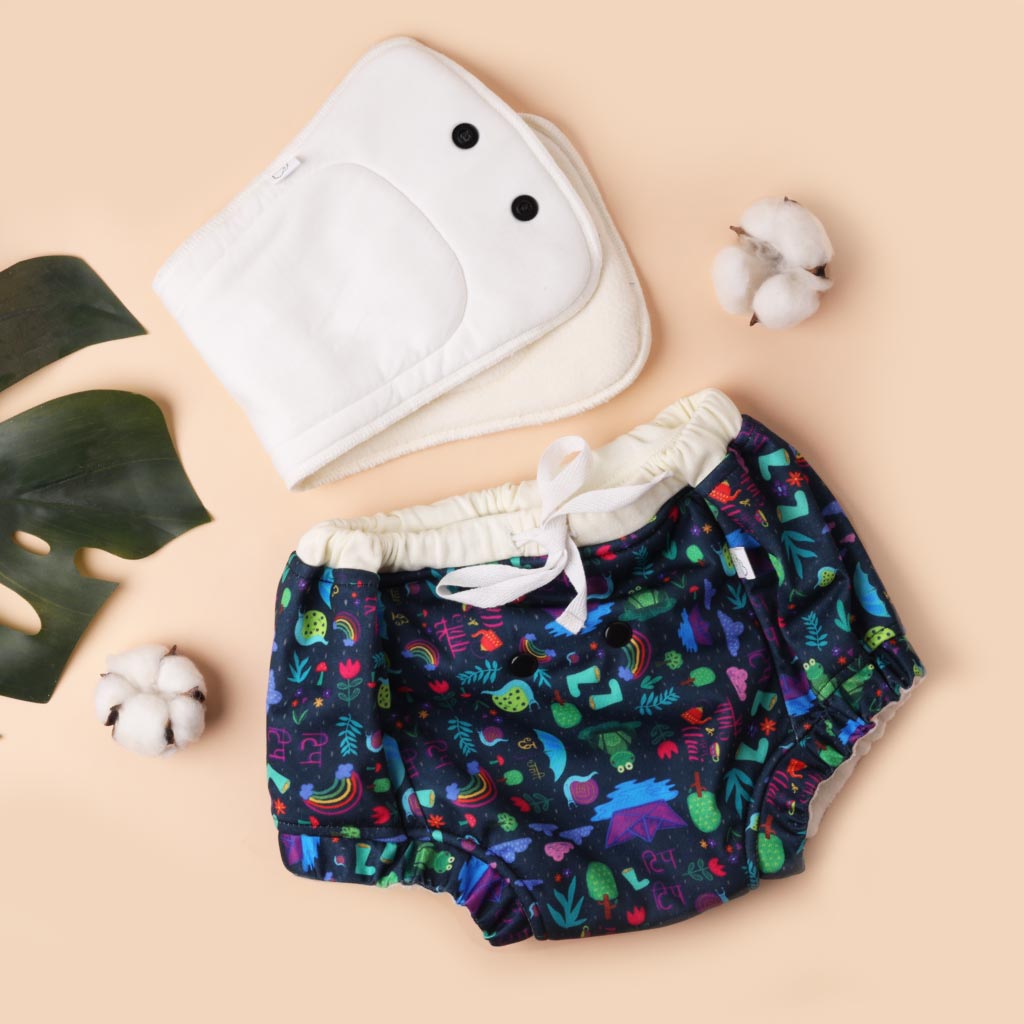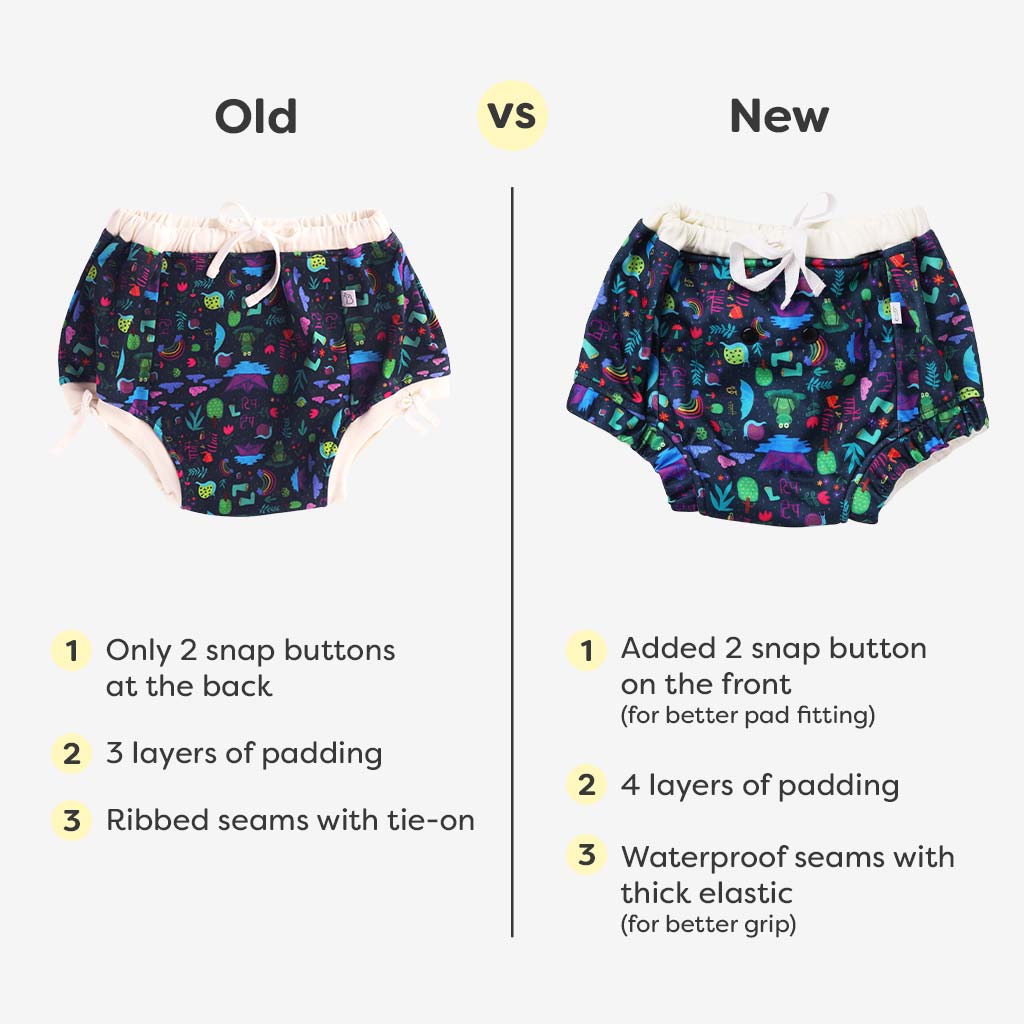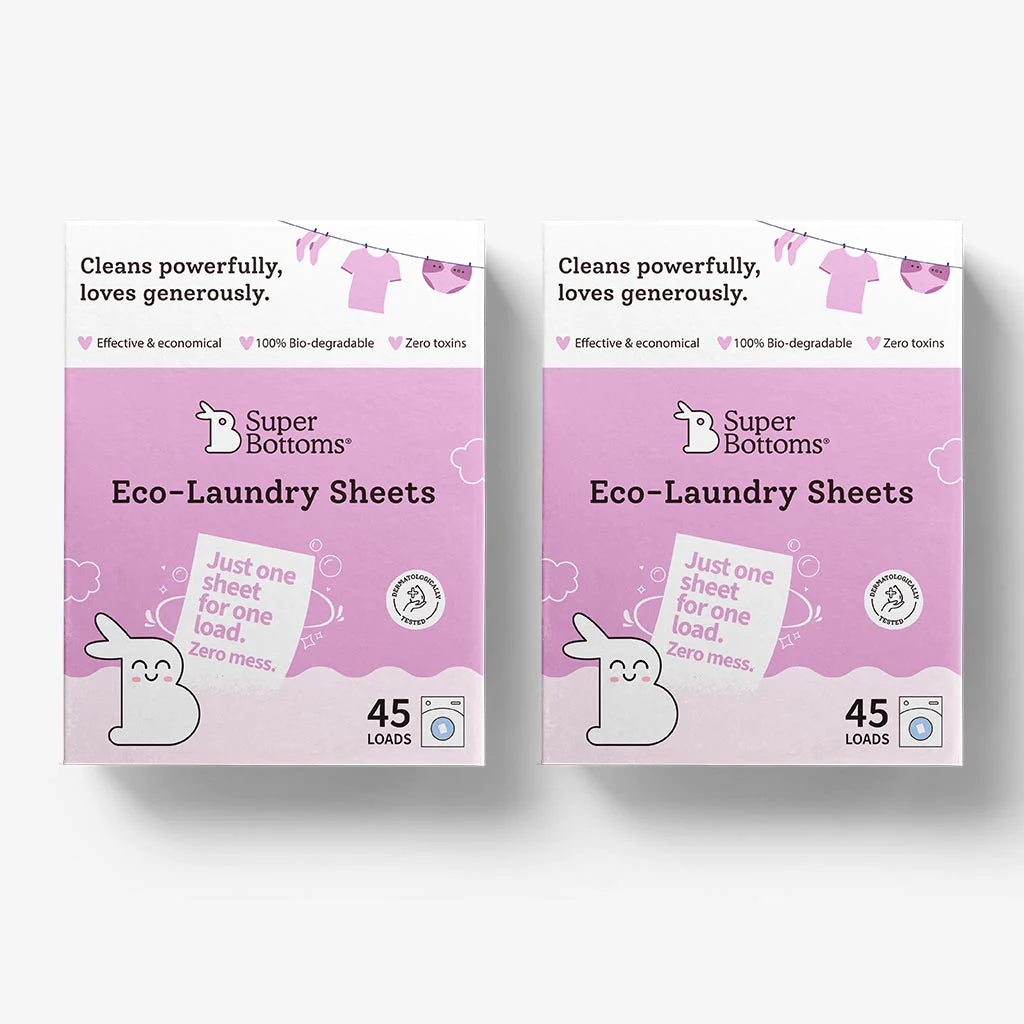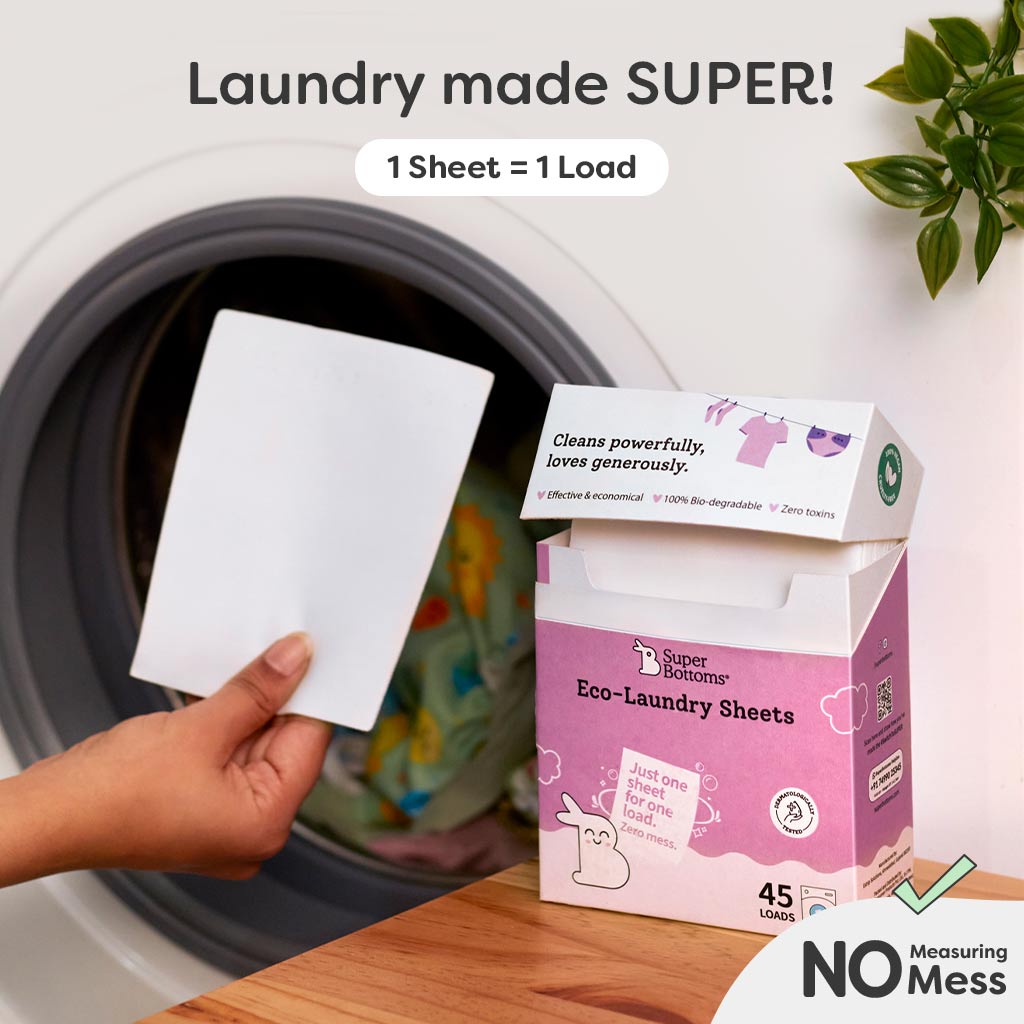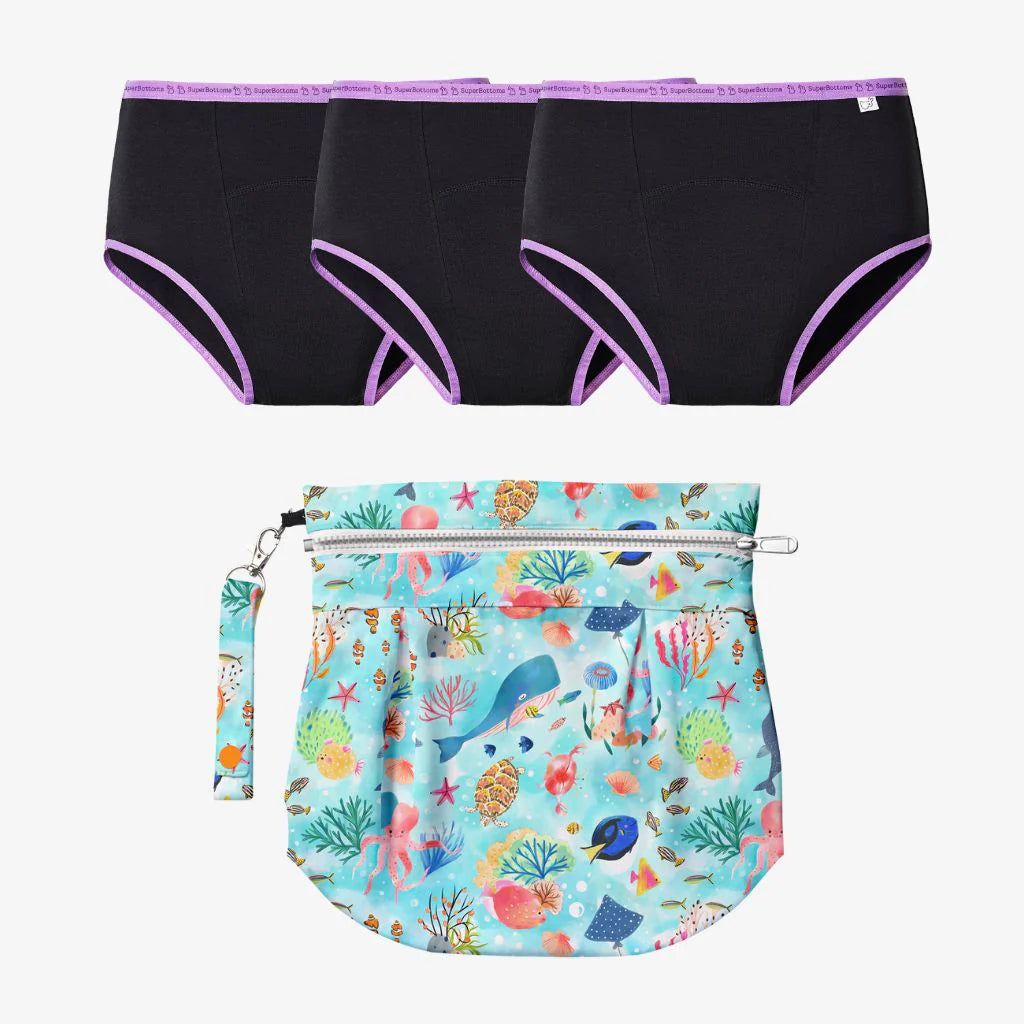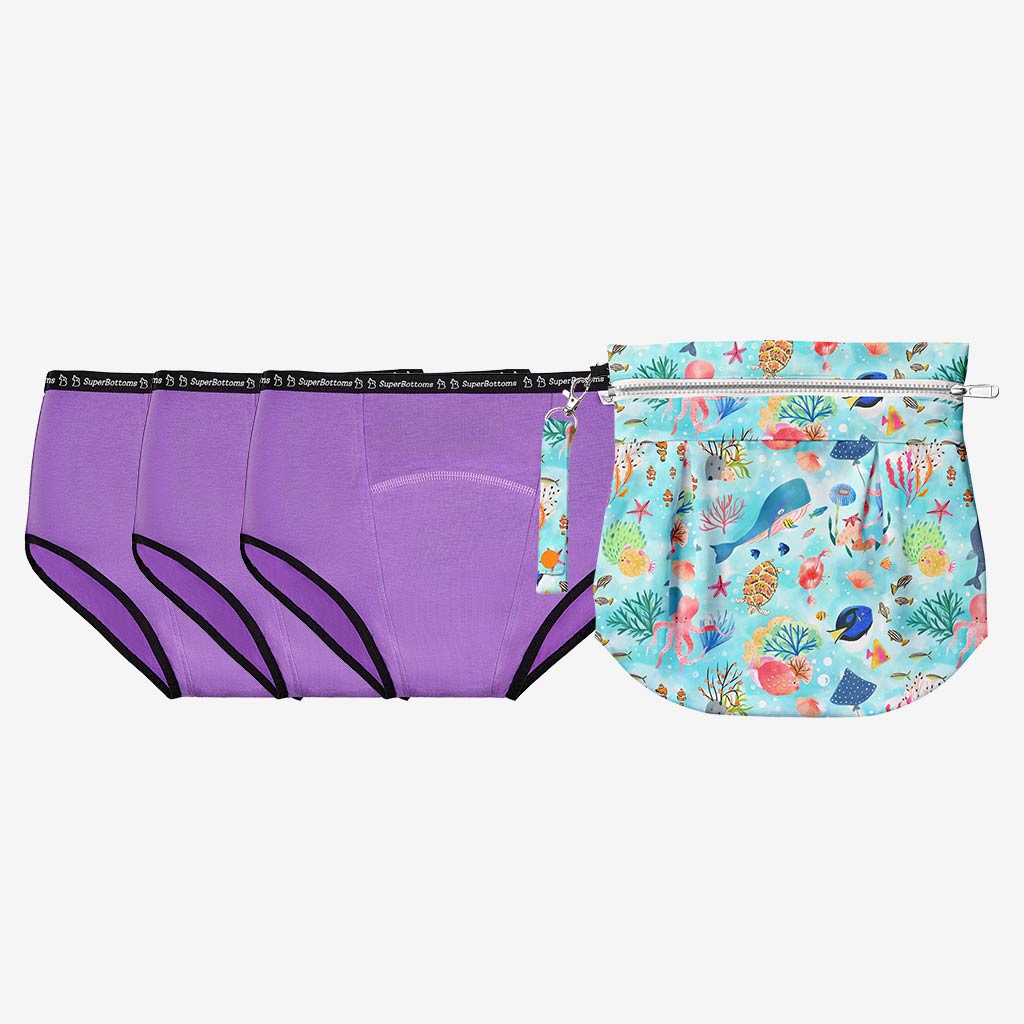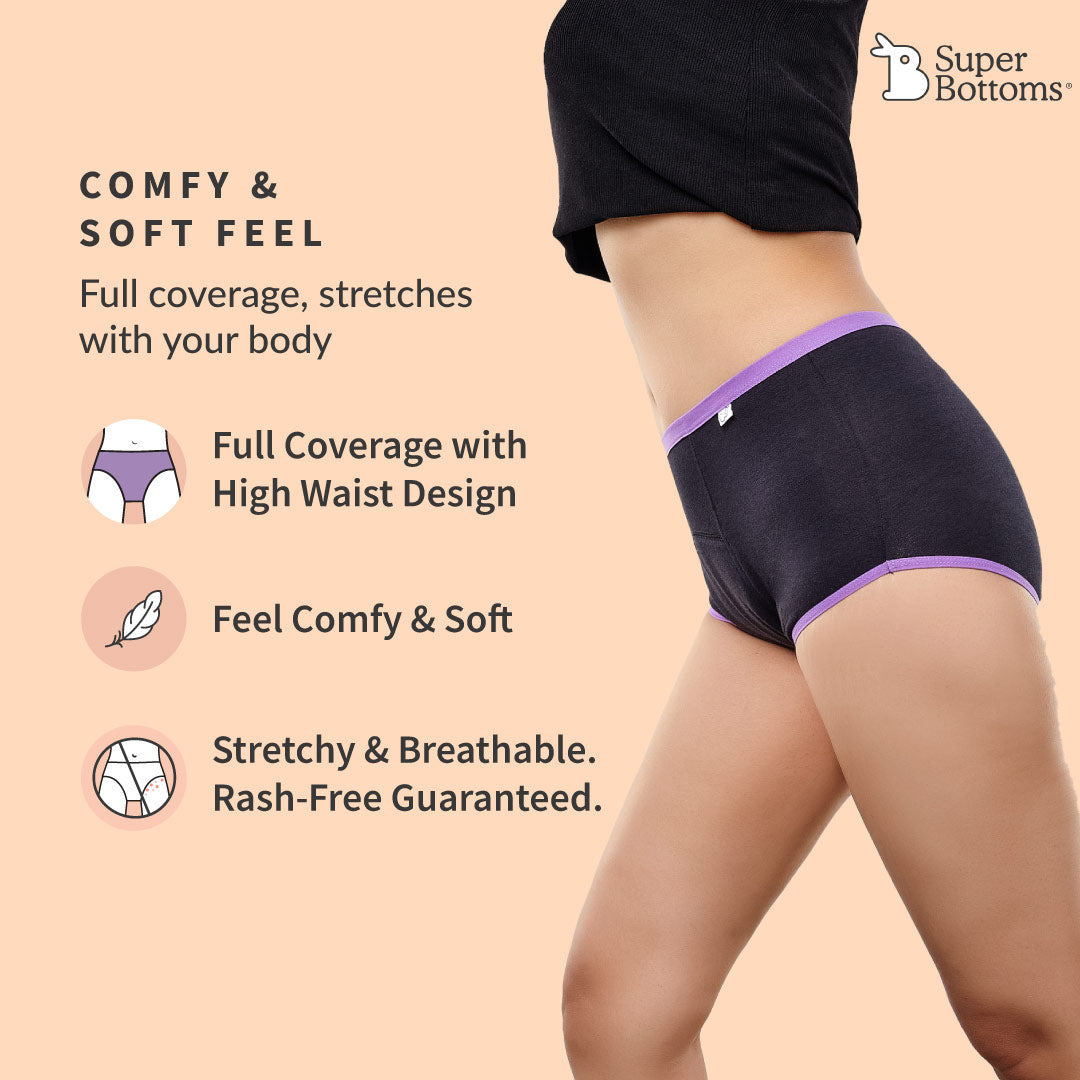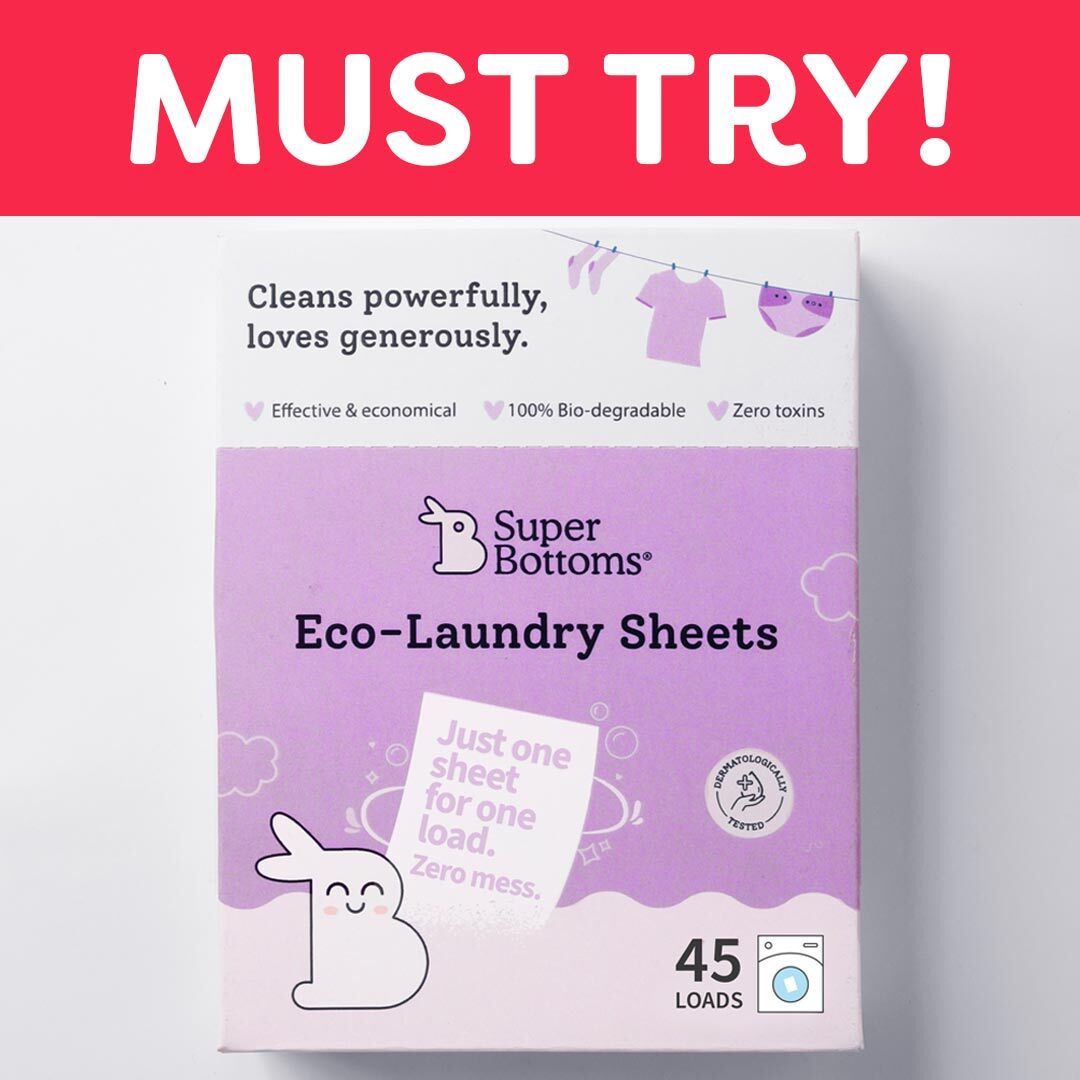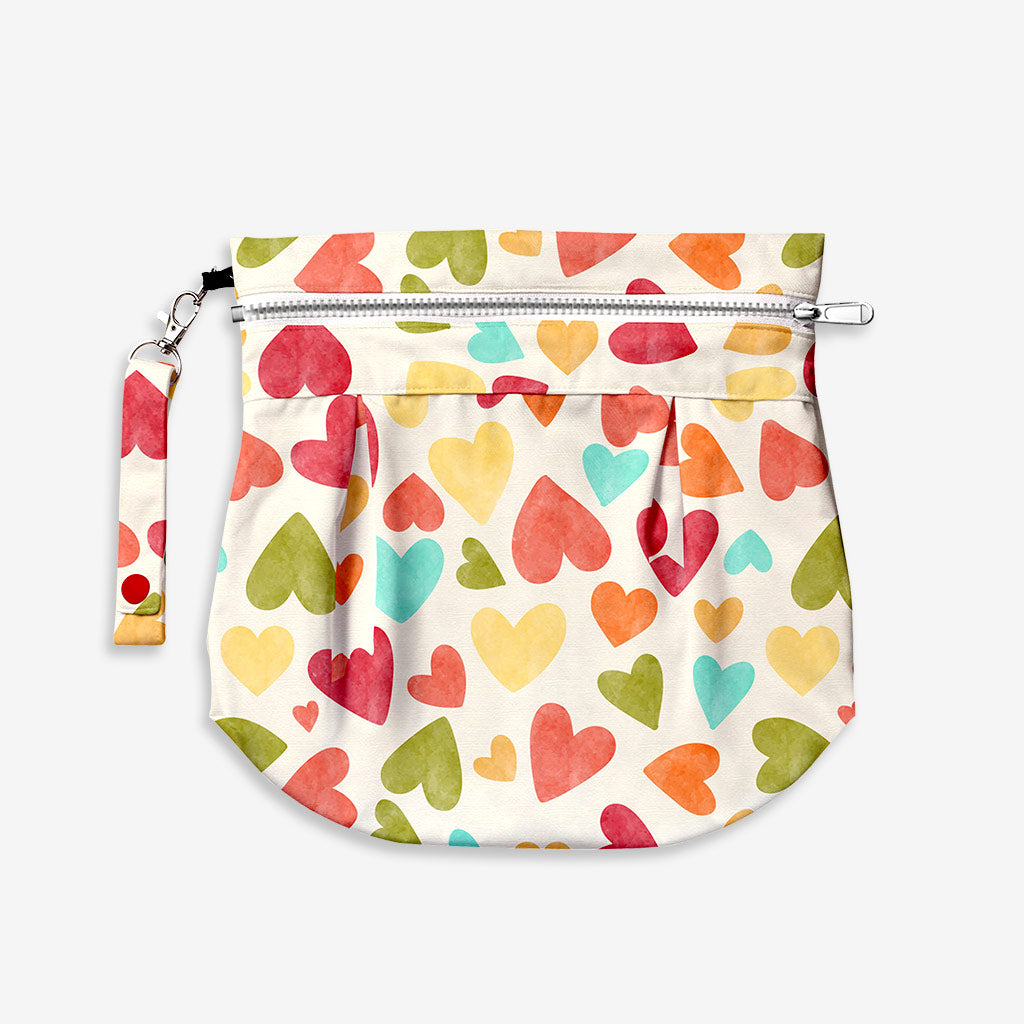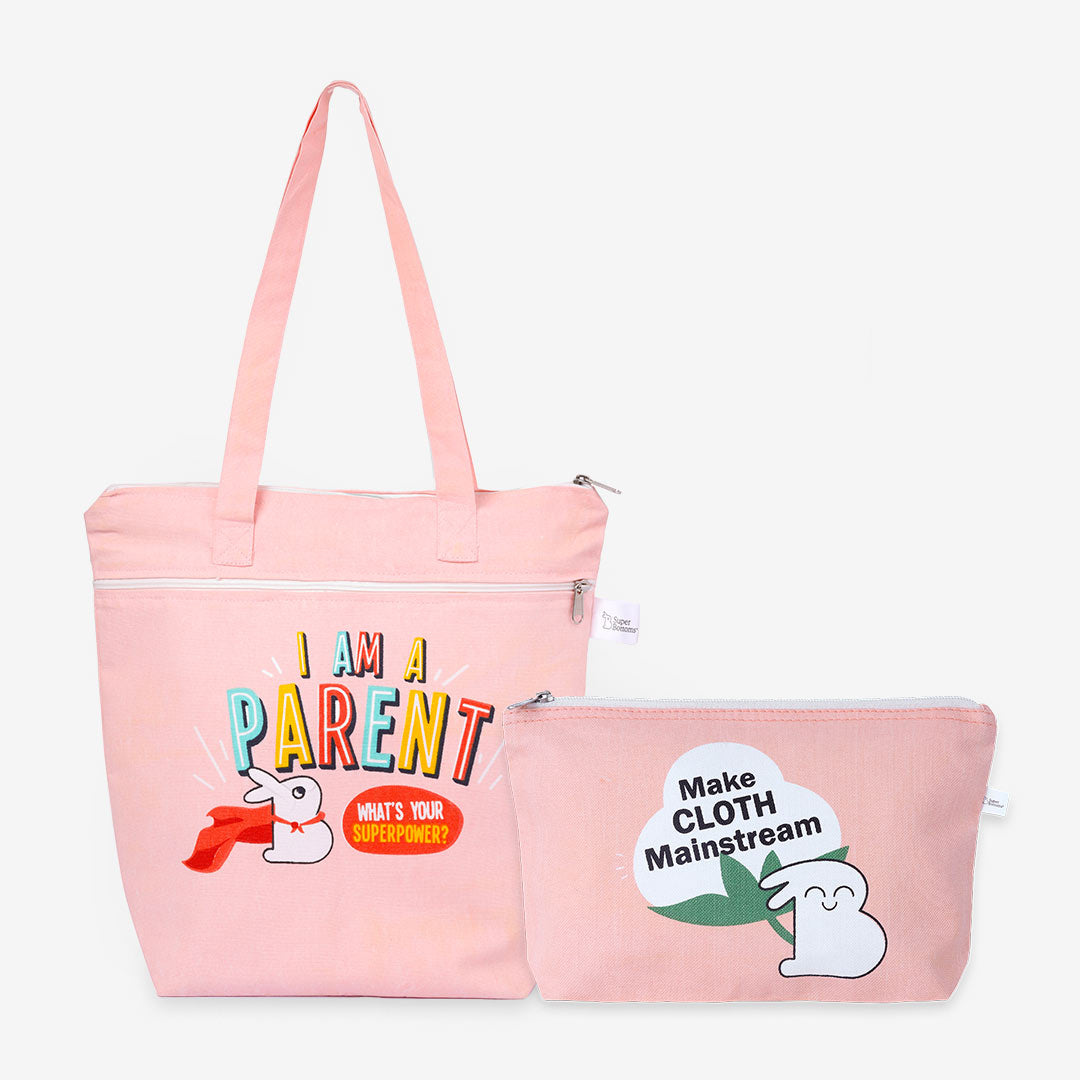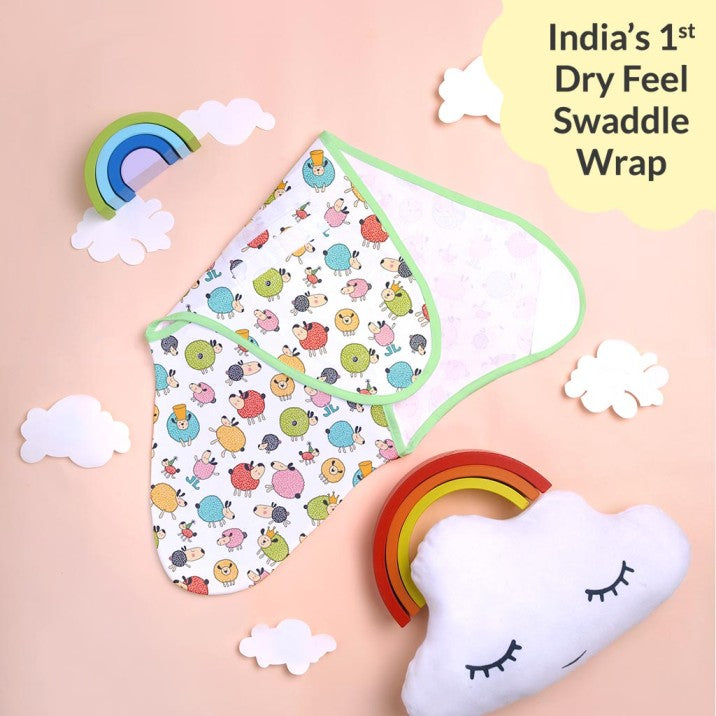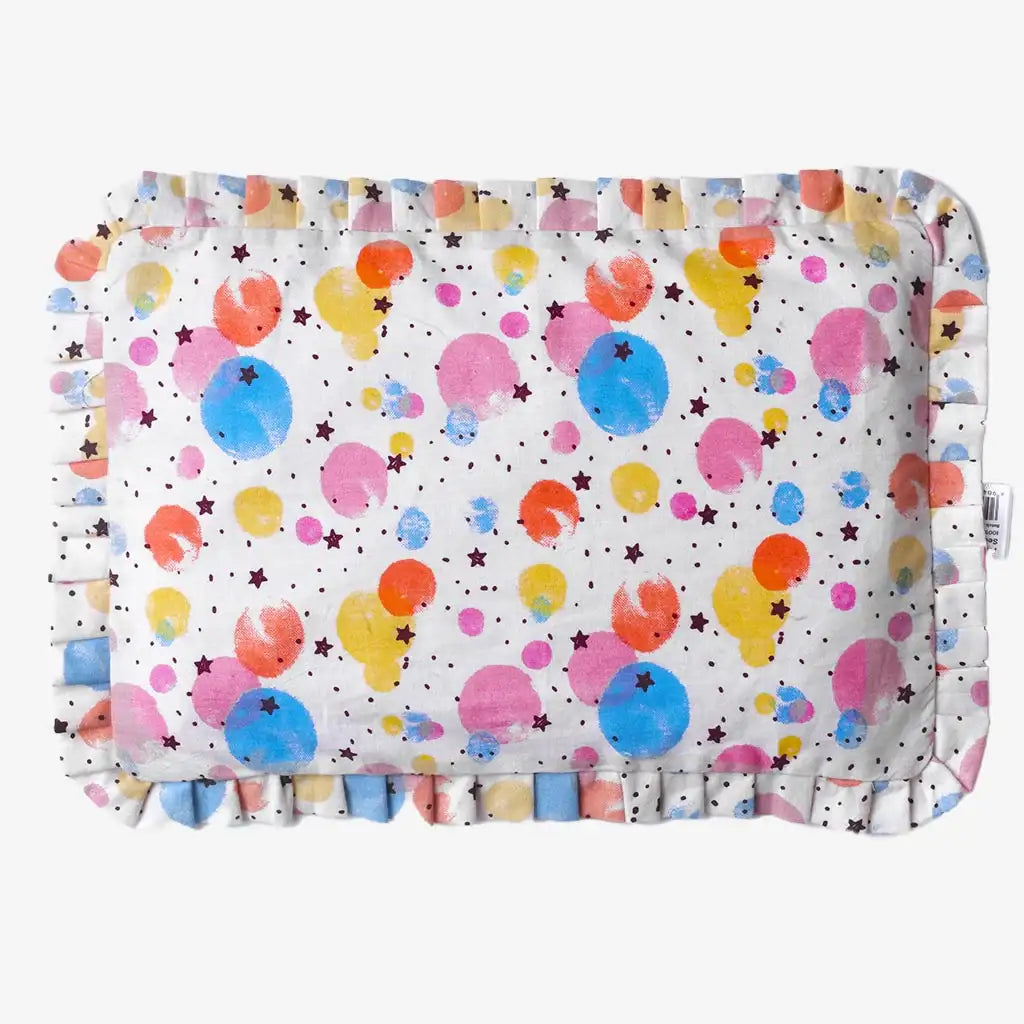In today's fast-paced world, parenting choices are abundant, and none sparks more debate than the age-old cloth vs. disposable diapers dilemma. While disposable diapers have become the convenient go-to choice for modern parents, it is essential to look closer at their potential drawbacks. In this discussion, we will delve into the top 10 disposable diapers' side effects, shedding light on the environmental impact and comparing the benefits of cloth diapers vs disposable diapers. By exploring these facts in this article by SuperBottoms, we hope to empower parents to make well-informed decisions that prioritize the well-being of their little ones and the world they will inherit.
What Are Cloth Diapers vs Regular Diapers?
Cloth diapers have been used for centuries and are making a comeback as an eco-friendly and cost-effective alternative to regular disposable diapers. These diapers are made from natural fibers such as cotton, bamboo, or hemp, which are soft, breathable, and gentle on a baby's delicate skin. Cloth diapers come in various styles, including prefolds, fitted diapers, and pocket diapers, allowing parents to choose the most suitable option for their baby's needs. One of the significant advantages of newborn cloth diapers is their reusability, as they can be washed and reused multiple times, significantly reducing waste and their environmental impact.
Regular diapers, also known as disposable diapers, have become the standard choice for many parents due to their convenience and ease of use. These diapers are made from a combination of plastic, super-absorbent polymers, and other chemicals, which enable them to quickly lock away moisture and keep the baby's skin dry. Disposable diapers are designed for single use, meaning they are discarded after each diaper change, resulting in a considerable amount of waste in landfills. Despite their widespread popularity, there are disposable diapers side effects and drawbacks that deserve closer examination.
10 Disposable Diapers Side Effects
While cloth or disposable diapers have gained immense popularity for their convenience, they come with a host of negatives when compared to their cloth diaper counterparts. Understanding these drawbacks can help parents make informed decisions for their baby's well-being and the environment when deciding on cloth diapers vs regular diapers.
1. Environmental Impact: The most known disposable diapers side effects is their impact on the environment. Disposable diapers contribute to a massive amount of waste, with millions ending up in landfills daily. The decomposition process of these diapers can take centuries, leading to significant environmental pollution.
2. Chemicals and Toxins: Regular diapers contain chemicals, including dioxins, phthalates, and other potentially harmful substances. These chemicals can come into contact with a baby's sensitive skin and might lead to skin irritation or allergies which is one of the biggest disposable diapers side effects.
|
Limited Offers Ending Sooner - BUY NOW Now or never offers live on the SuperBottoms website. Take advantage of the never-before Good Value for Money on our offer page! Stock up on the bestselling UNO diapers, accessories & other popular SuperBottoms baby and mom products now available in deals and discounts. HURRY, the Deals are Live till stocks last! |
3. Diaper Rash: The super-absorbent polymers present in disposable diapers can lock in moisture, creating a warm and moist environment ideal for diaper rash, and it is also one of the biggest disposable diaper side effects. Babies using regular diapers might be more prone to developing uncomfortable and painful rashes.
4. Higher Long-Term Costs: While the upfront cost of cloth diapers can seem higher, they are more cost-effective in the long run. Reusable cloth diapers can be used for multiple children, saving parents significant amounts of money compared to the ongoing expense of disposable diapers.
5. Less Breathability: Regular diapers made of synthetic materials may not be as breathable as reusable diapers, potentially causing discomfort and trapping heat, leading to skin issues.
6. Dependency on Petroleum Products: Disposable diapers rely on petroleum-derived materials for their production, contributing to the depletion of natural resources and reliance on non-renewable energy sources.
7. Slow Decomposition: As mentioned earlier, disposable diapers take an exceptionally long to decompose fully. This extended decomposition period can contribute to pollution and environmental harm for future generations.
8. Risk of Chemical Burns: In some rare cases, disposable diapers with a high concentration of super-absorbent polymers have been associated with chemical burns in babies.
9. Less Control Over Materials: With disposable diapers, parents have limited control over the materials used in the product, which may not align with their environmental or health-conscious values.
10. Less Customization: Organic cotton cloth diapers come in various styles and sizes, allowing for better customization and fit for babies of all shapes and sizes. Regular diapers, being mass-produced, may not offer the same level of customization and comfort.
SuperBottoms FreeSize UNO: The Best Choice for Your Baby
When choosing the right diapering option for your baby, the age-old debate between cloth diapers and regular disposable diapers continues to intrigue parents worldwide. However, one brand that stands out and offers a compelling solution is SuperBottoms, with their innovative FreeSize UNO cloth diaper. Let's explore why SuperBottoms FreeSize UNO is the best choice for your little one, considering the benefits of cloth diapers over regular disposable diapers.
Benefits of SuperBottoms FreeSize UNO:
Now, let's delve into why the SuperBottoms FreeSize UNO diaper is a standout option for your little one:
1. Adjustable and Versatile: The FreeSize UNO is designed to fit babies from newborns to toddlers, making it a one-size-fits-all solution. Its adjustable snaps and stretchable materials ensure a snug and comfortable fit throughout your baby's growth.
2. Superior Absorbency: The FreeSize UNO Diapers come with a highly absorbent insert, providing excellent leak protection and keeping your baby dry and comfortable for extended periods.
3. Easy to Clean: SuperBottoms designed the FreeSize UNO to be easy to clean, saving parents valuable time and effort. The diapers are machine washable, and the inserts can be easily removed for washing and drying.
4. Eco-Conscious Materials: SuperBottoms prioritizes sustainability, using eco-friendly materials in their diaper design. By choosing the FreeSize UNO, parents contribute to a greener planet for future generations.
5. Adorable Designs: SuperBottoms offers a wide range of cute and stylish designs for their FreeSize UNO, adding a touch of fun and personality to your baby's diapering experience.
Conclusion
In conclusion, when considering your baby's well-being and the environment, the SuperBottoms FreeSize UNO emerges as the best choice. Its eco-friendly design, cost-effectiveness, and comfort make it a standout option among cloth diapers, and the benefits of cloth diapers over regular disposable diapers further emphasize the advantages of choosing SuperBottoms FreeSize UNO for your little one's diapering needs.
Frequently Asked Questions
Q1: What are regular diapers, and how do they differ from cloth diapers?
A: Regular diapers, also known as disposable diapers, are single-use diapers made from synthetic materials, while cloth diapers for newborns are reusable and typically made from natural fibers like cotton or bamboo.
Q2: What are some of the side effects associated with disposable diapers?
A: Side effects of disposable diapers may include skin irritation, diaper rash, and potential exposure to harmful chemicals like dioxins and phthalates.
Q3: How do cloth diapers compare to regular diapers regarding environmental impact?
A: Cloth diapers are more eco-friendly since they can be reused multiple times, significantly reducing the amount of waste going to landfills compared to disposable diapers.
Q4: Are there any long-term benefits to using cloth diapers over regular diapers?
A: Yes, cloth diapers can lead to long-term cost savings since they are reusable, and their upfront investment can be offset by using them for multiple children.
Q5: Do cloth diapers cause more diaper rash compared to regular diapers?
A: Cloth diapers, if changed regularly and maintained properly, are less likely to cause diaper rash than regular diapers with super-absorbent polymers that may trap moisture.
Q6: What are the potential disposable diapers side effects associated with regular diapers?
A: Some studies suggest that chemicals in disposable diapers may pose health risks, such as skin irritation or allergies in babies.
Q7: Can cloth diapers be as absorbent as regular diapers?
A: Yes, modern cloth diapers like pocket diapers or hybrid systems often come with highly absorbent inserts, providing comparable leak protection to regular diapers.
MESSAGE FROM SUPERBOTTOMS
Hola, New Moms and Dads! We at SuperBottoms ensure you have the best and safest products for your babies, no matter what corner of India or the world you are in. SuperBottoms is appropriate for your baby's sensitive skin throughout their Cloth Diapers journey, in any season, and also offers Padded Underwear for women. If you reside in Canada, Kuwait, the United States, Qatar, Hawaii, Bahrain, Armenia, the United Arab Emirates, or the Philippines, SuperBottoms is an essential product for you and your child.








